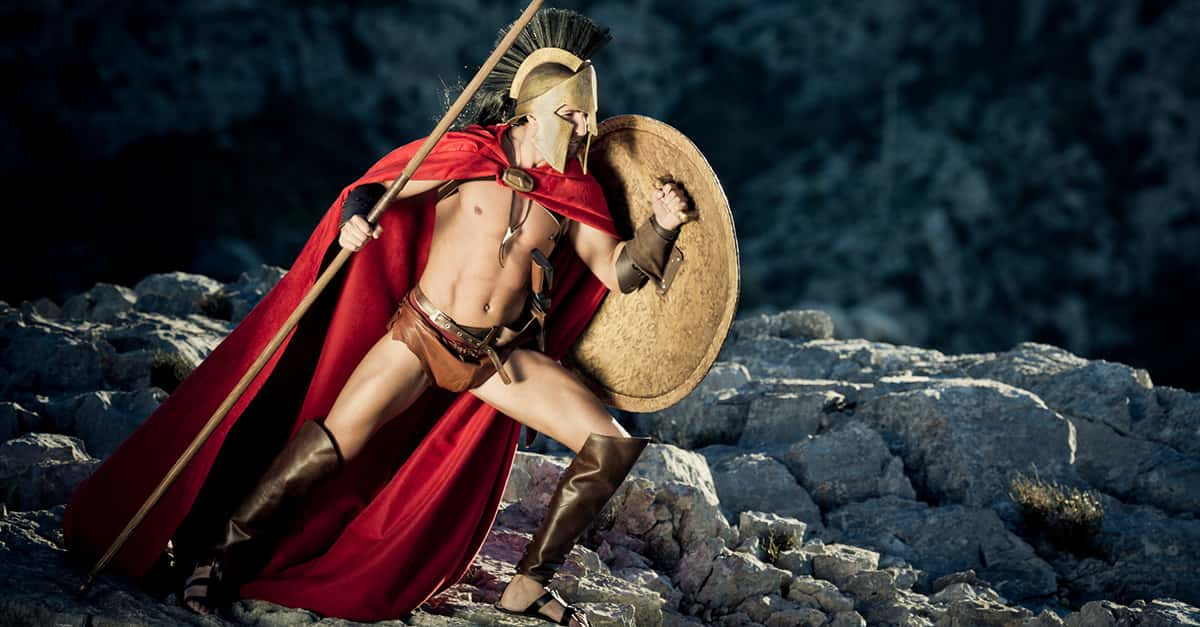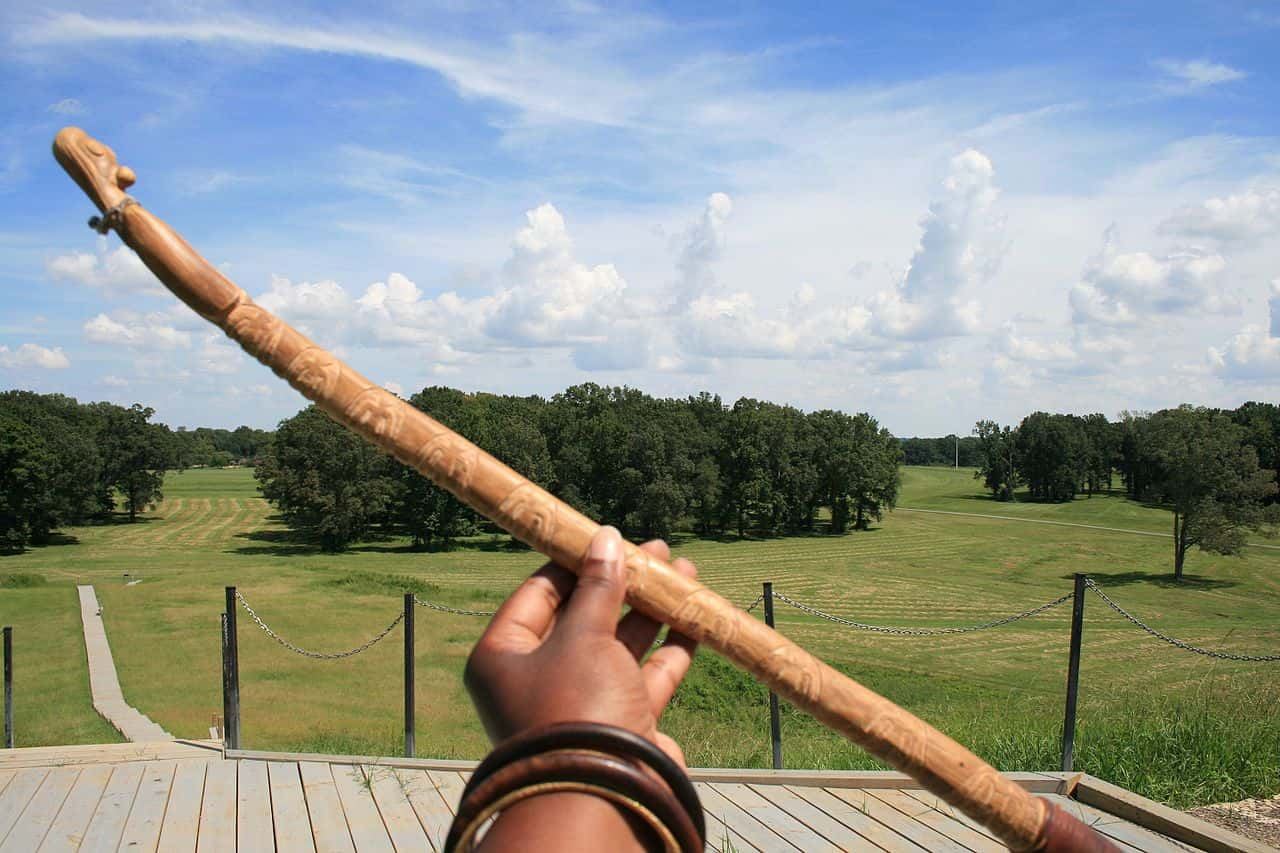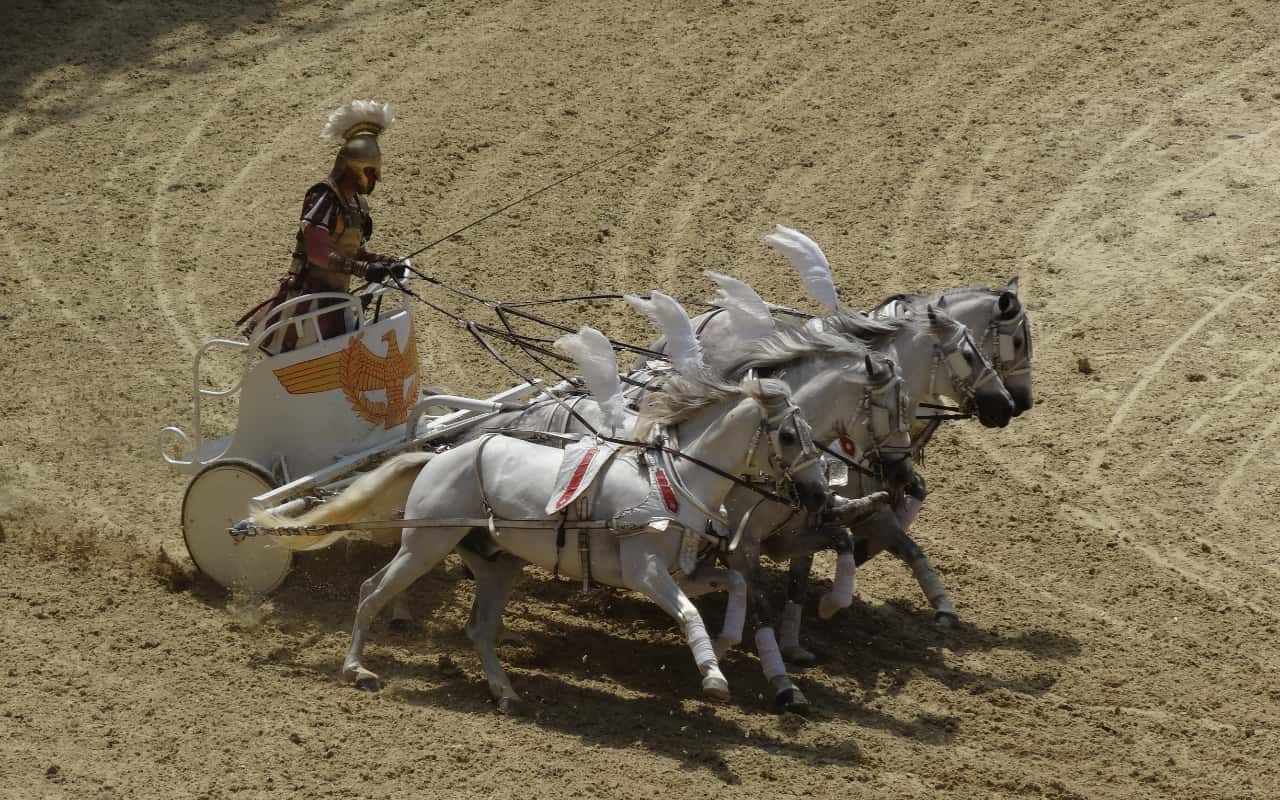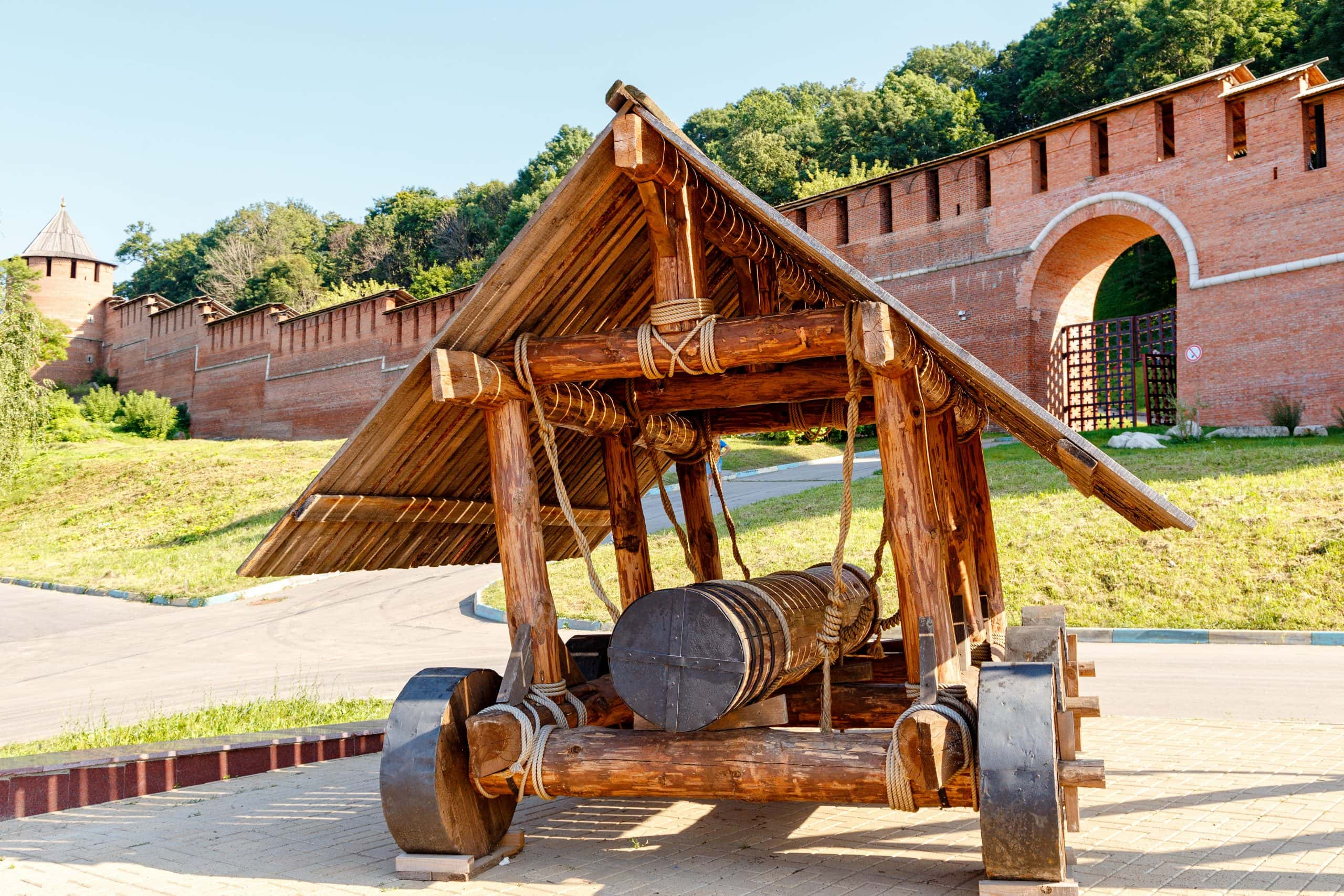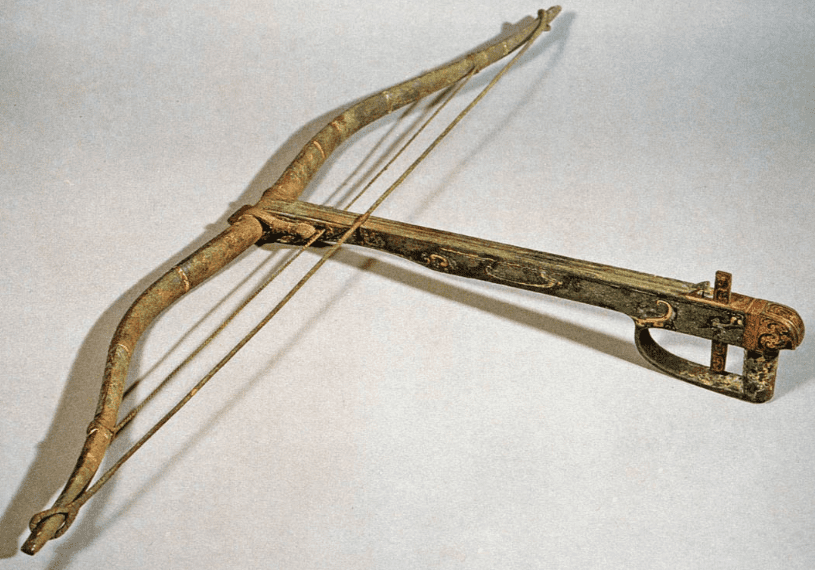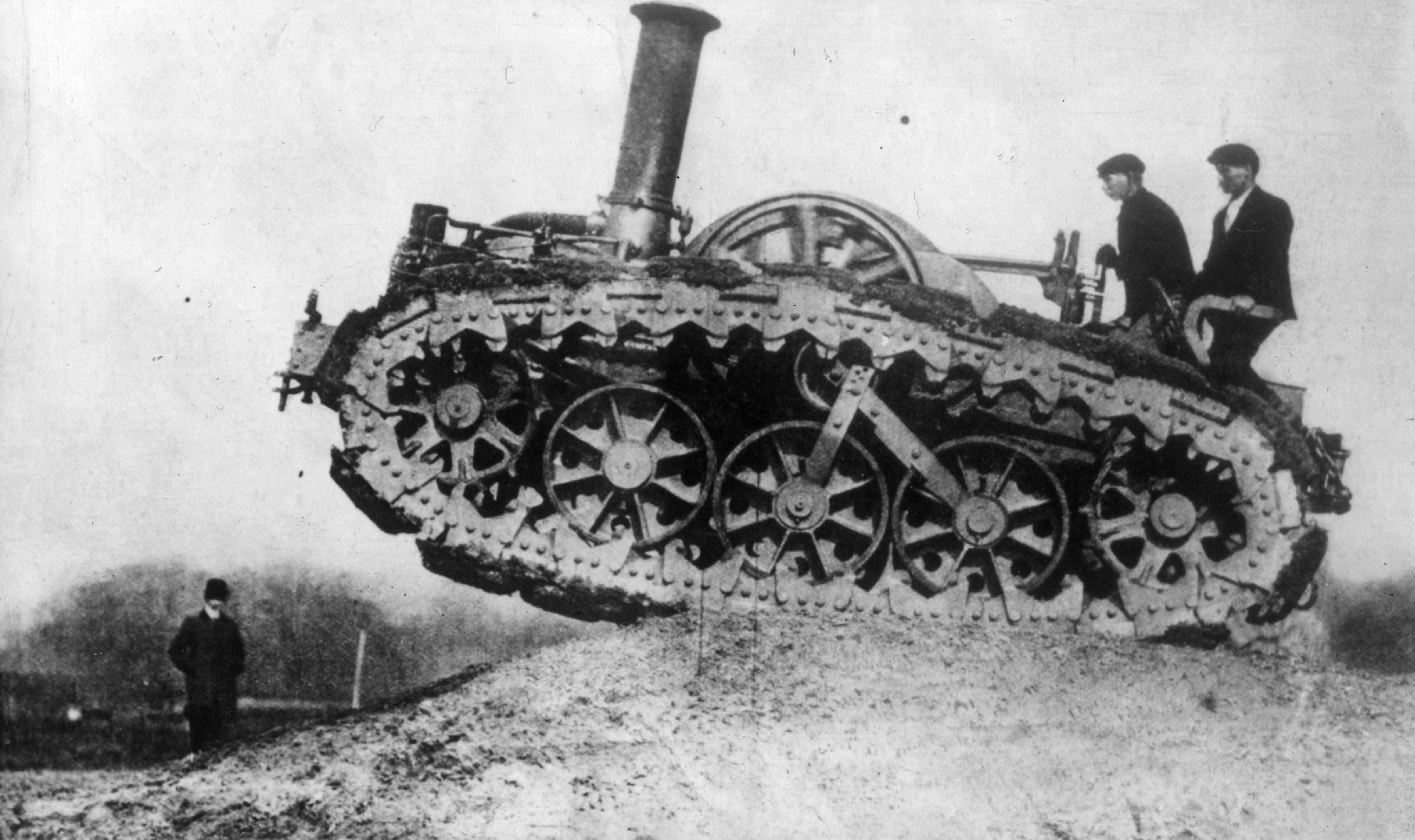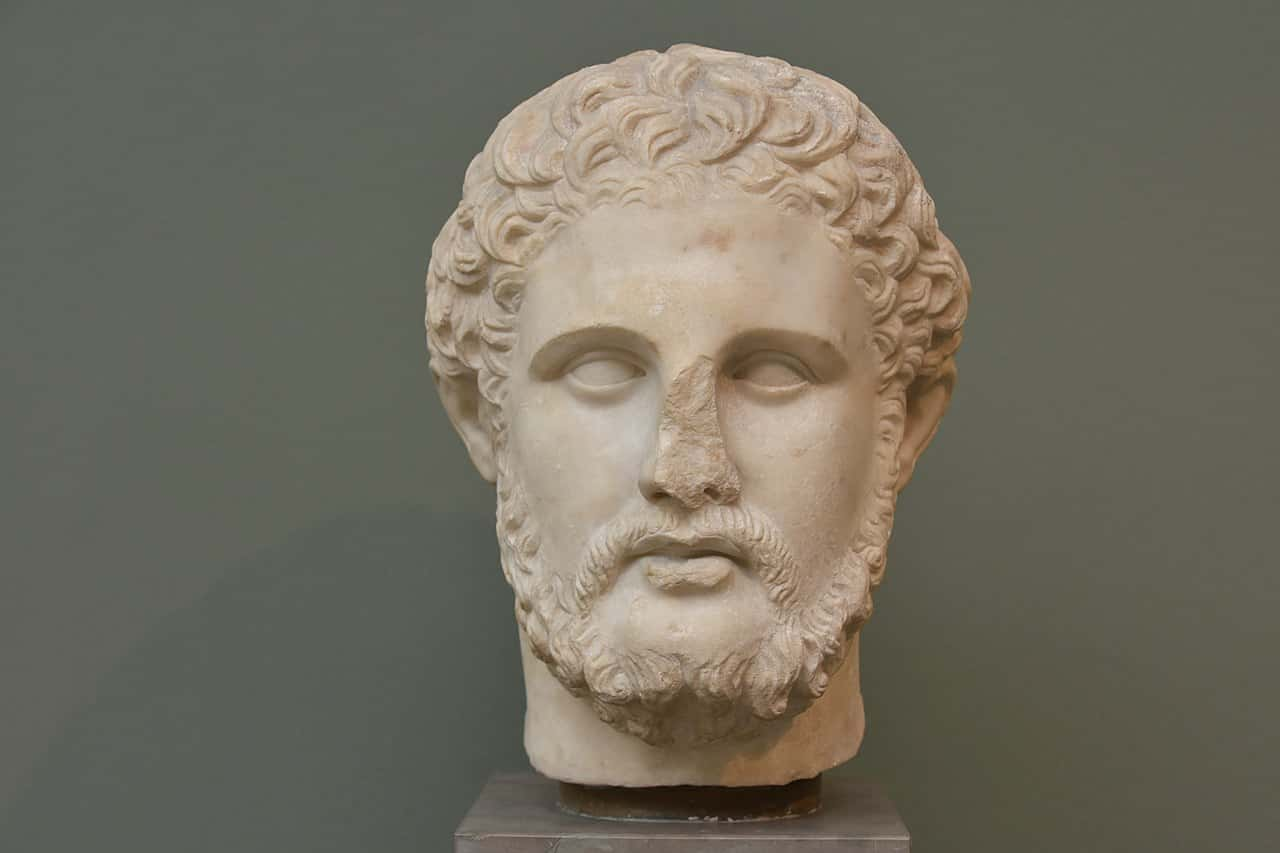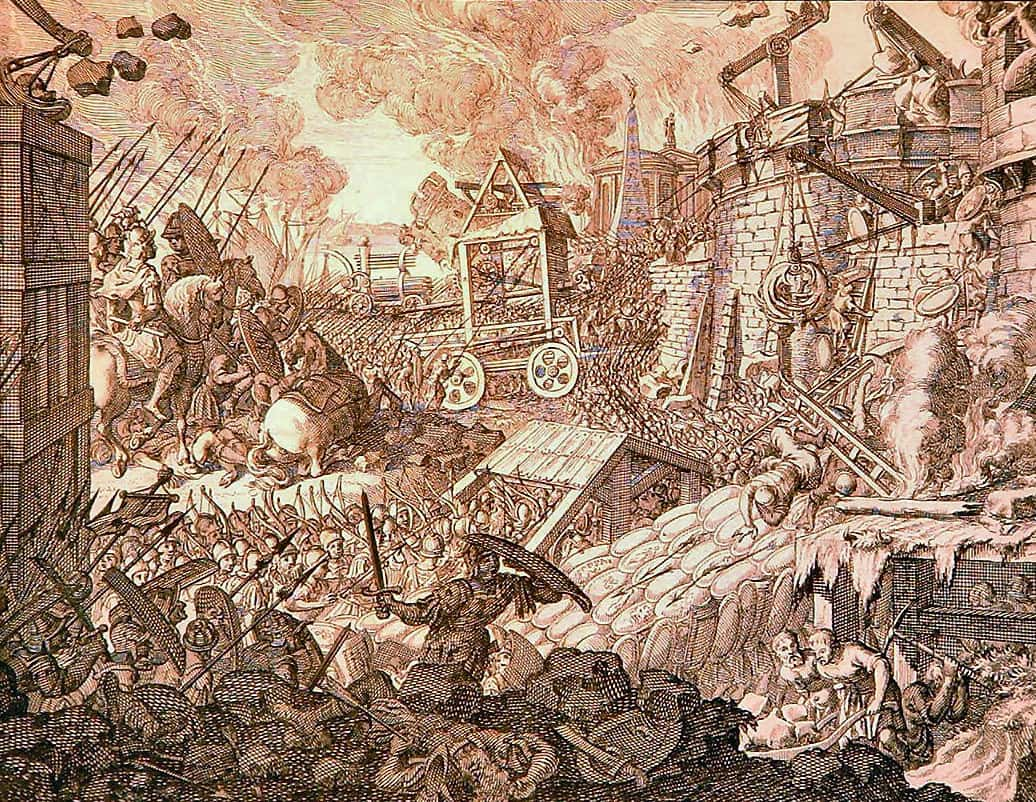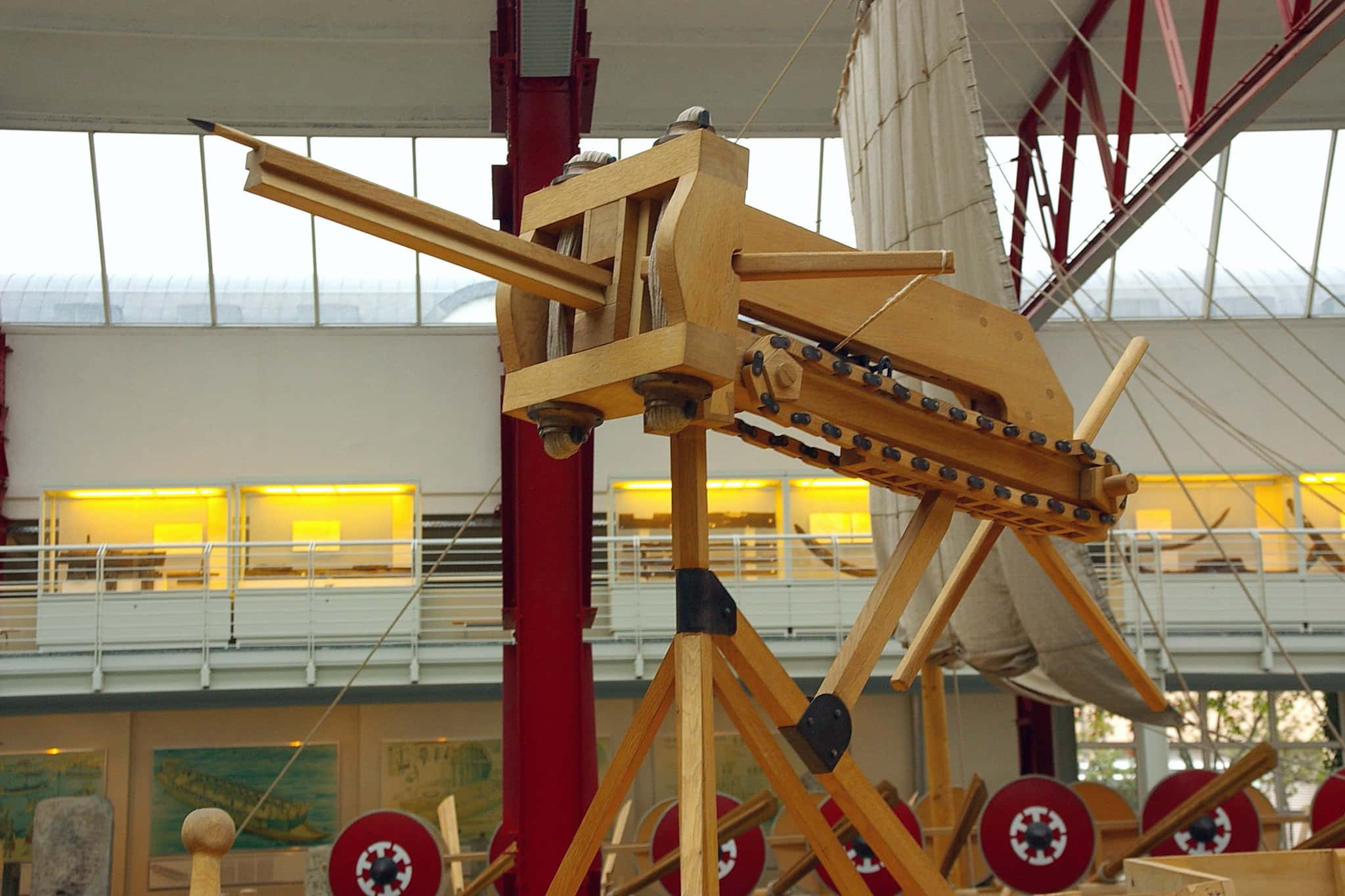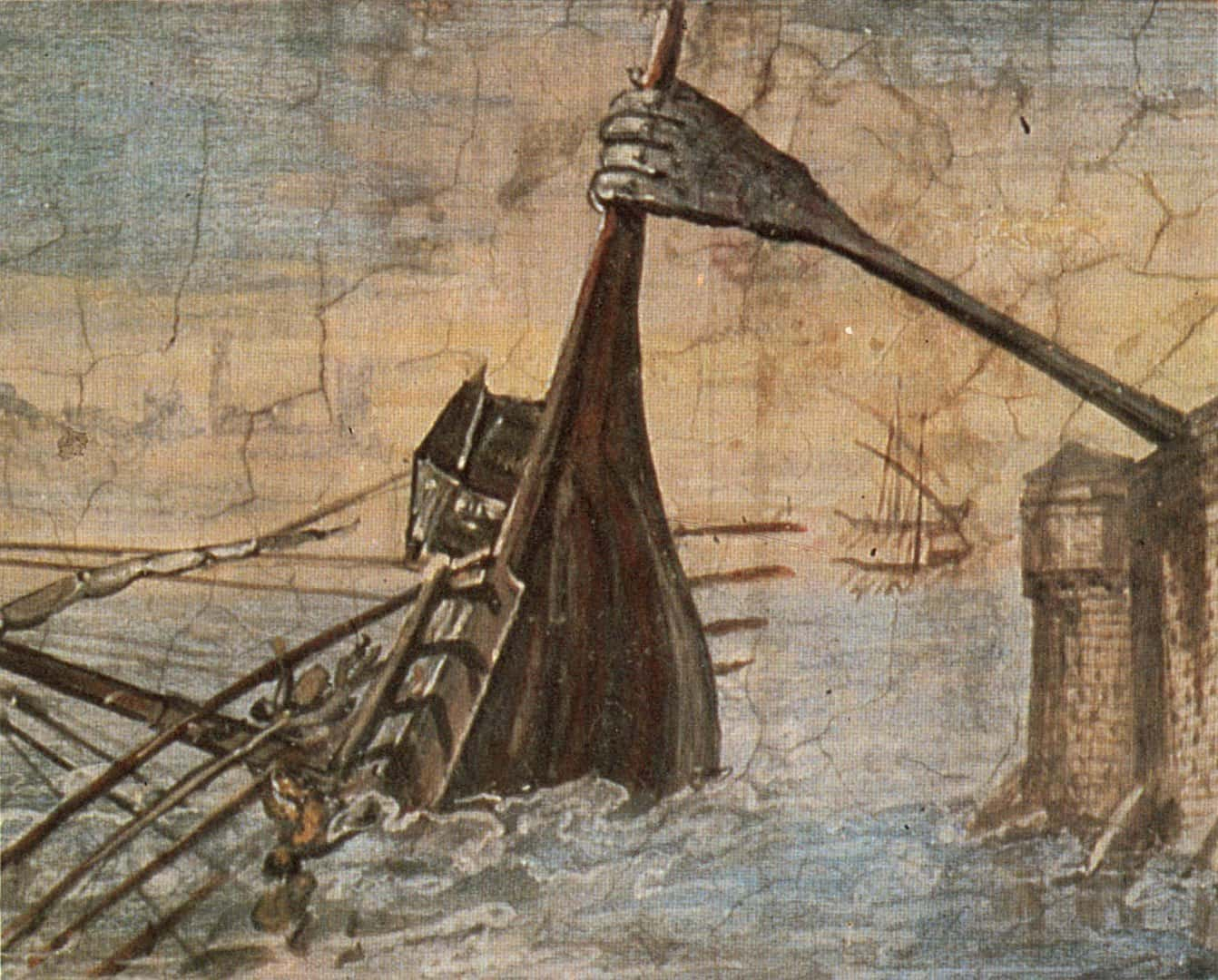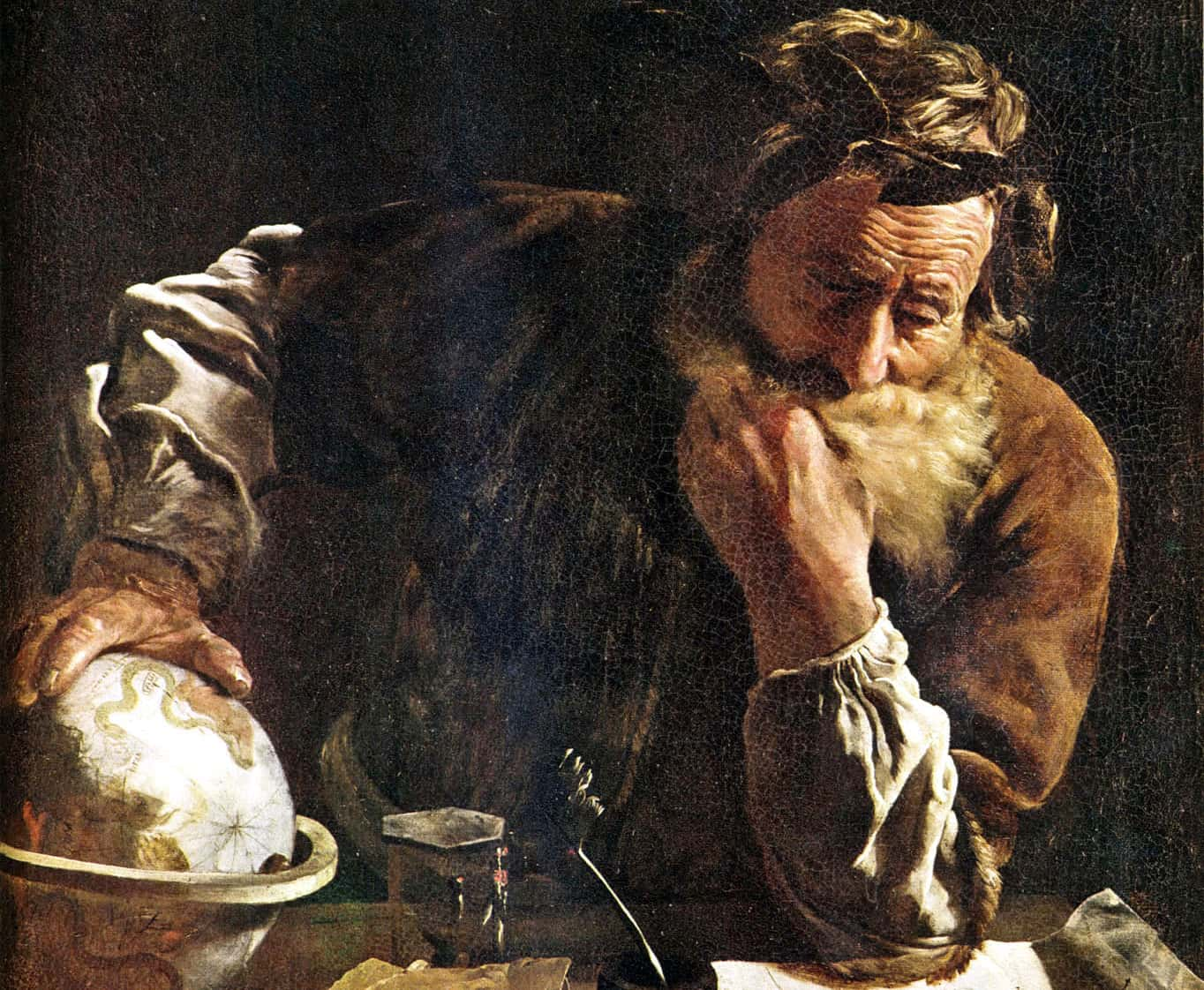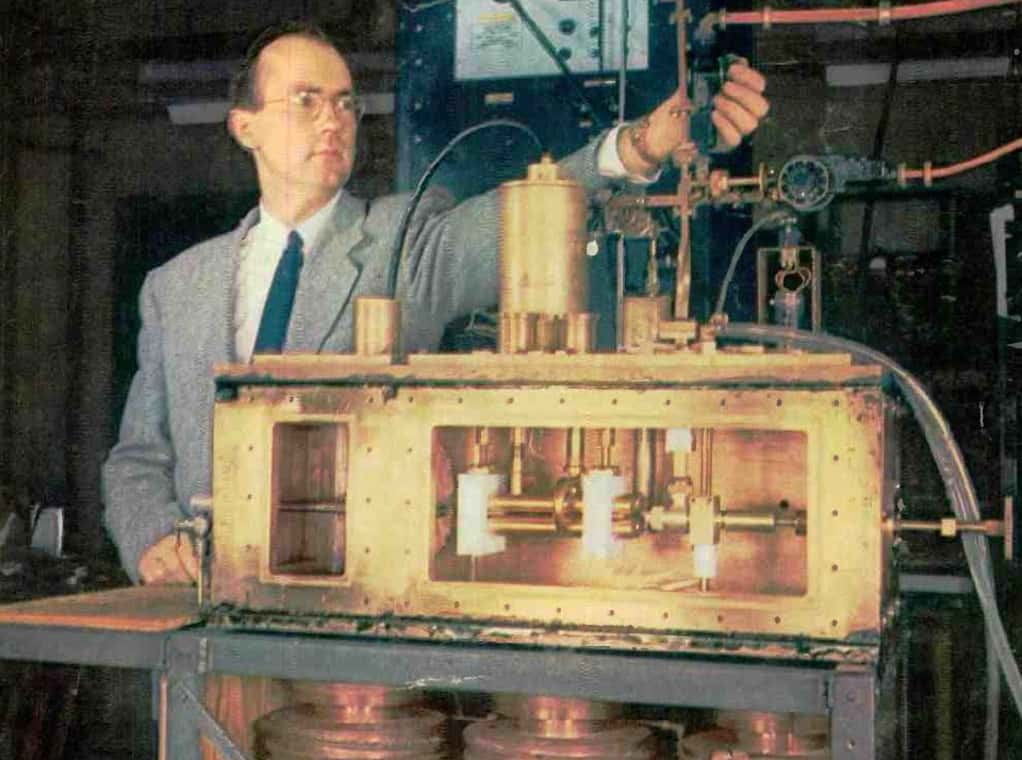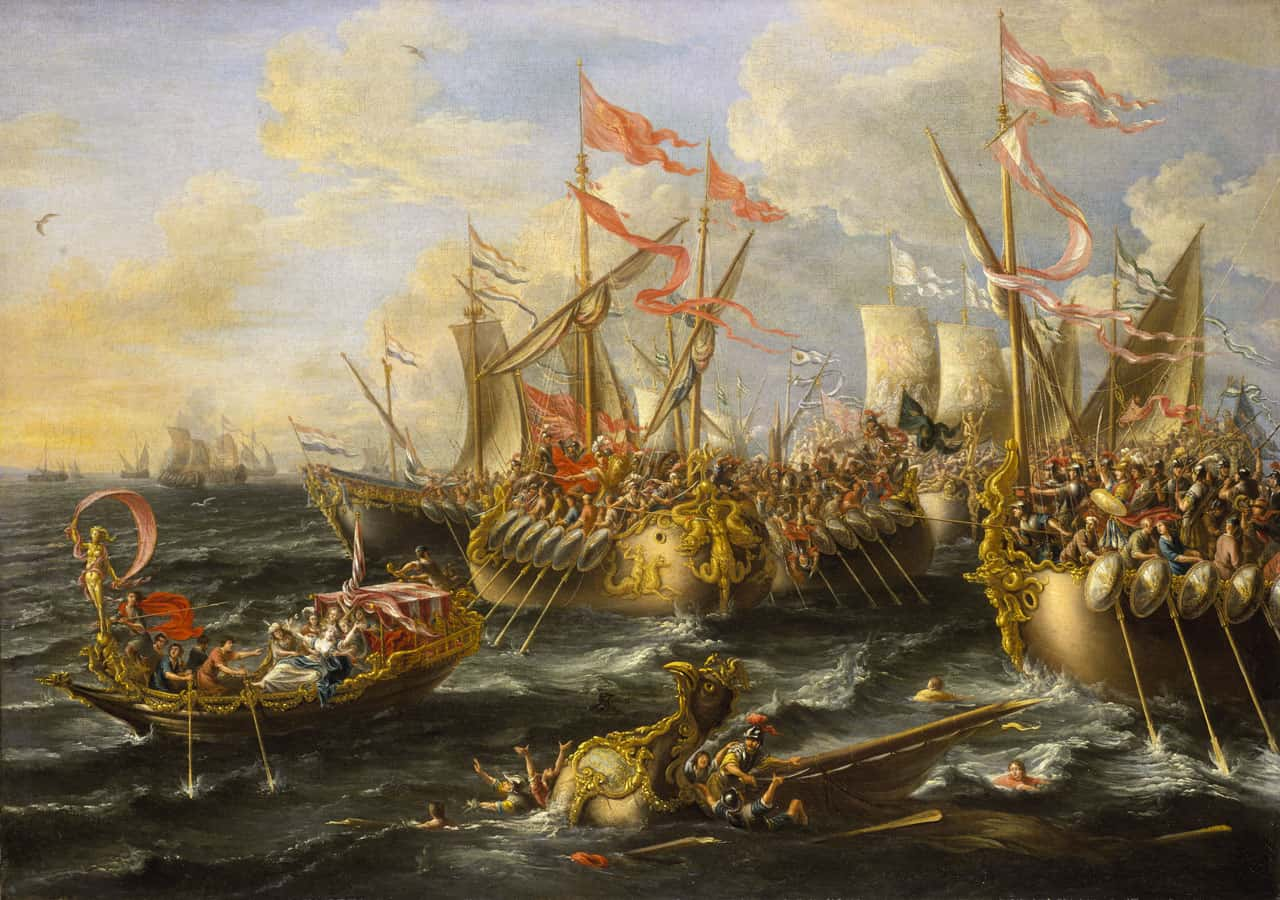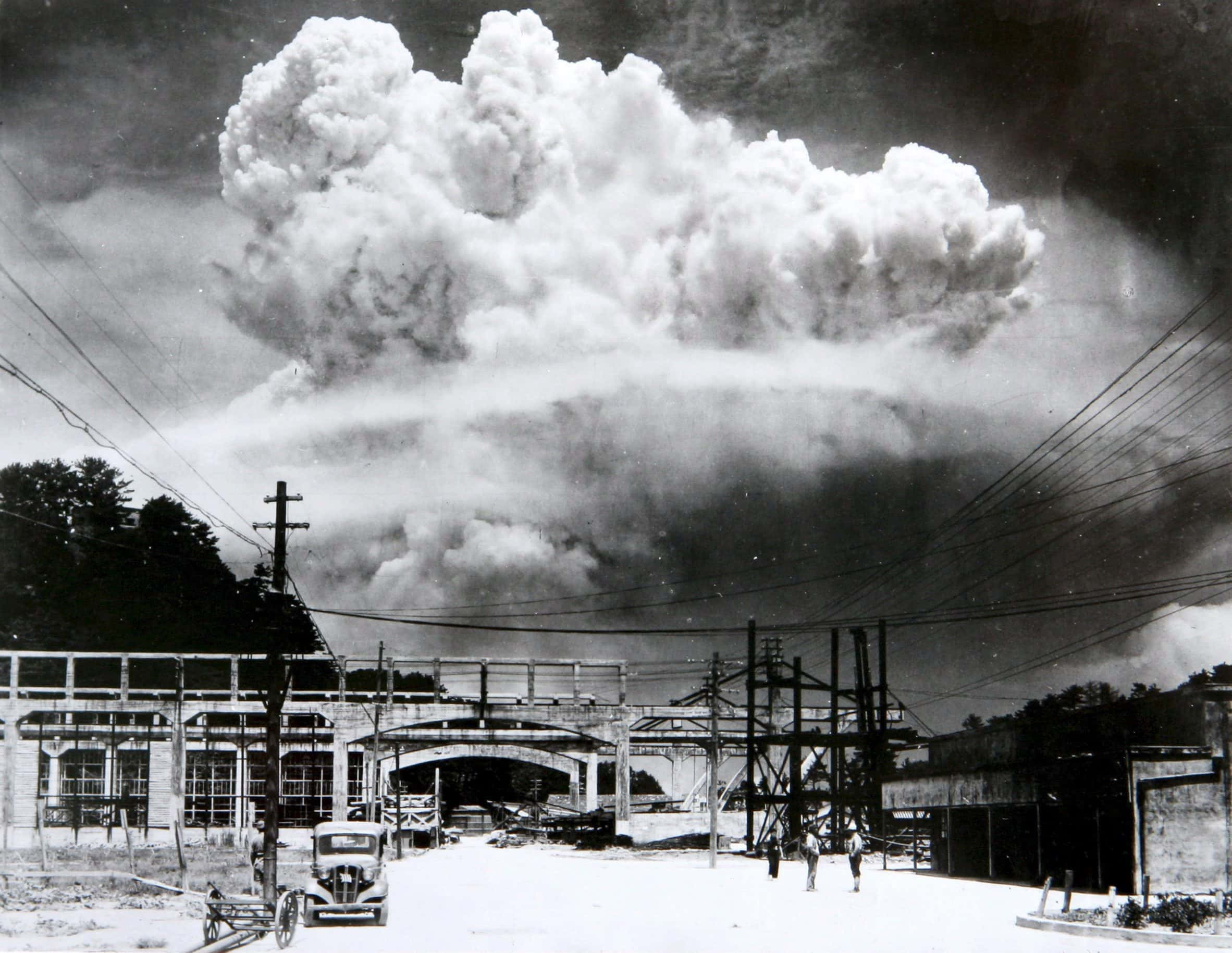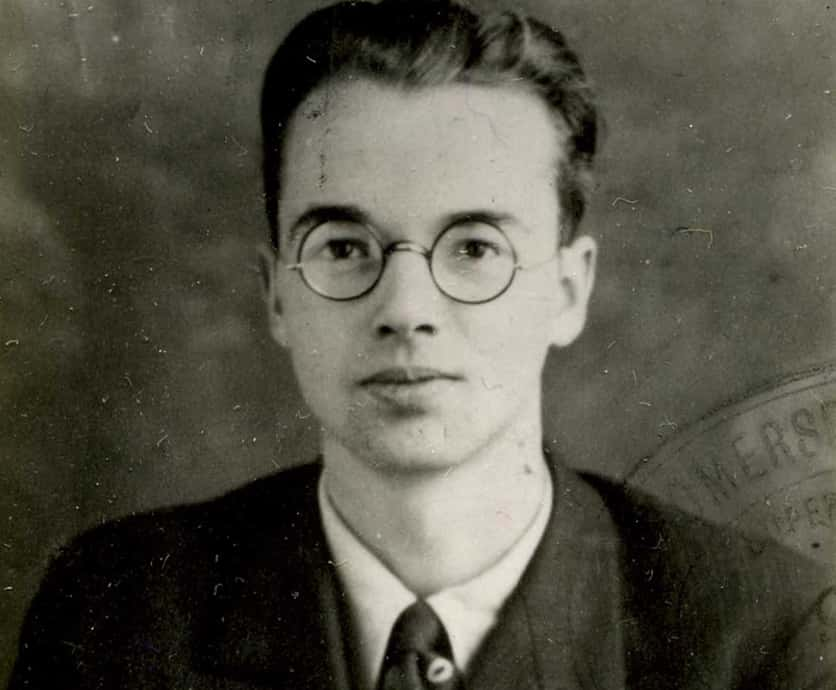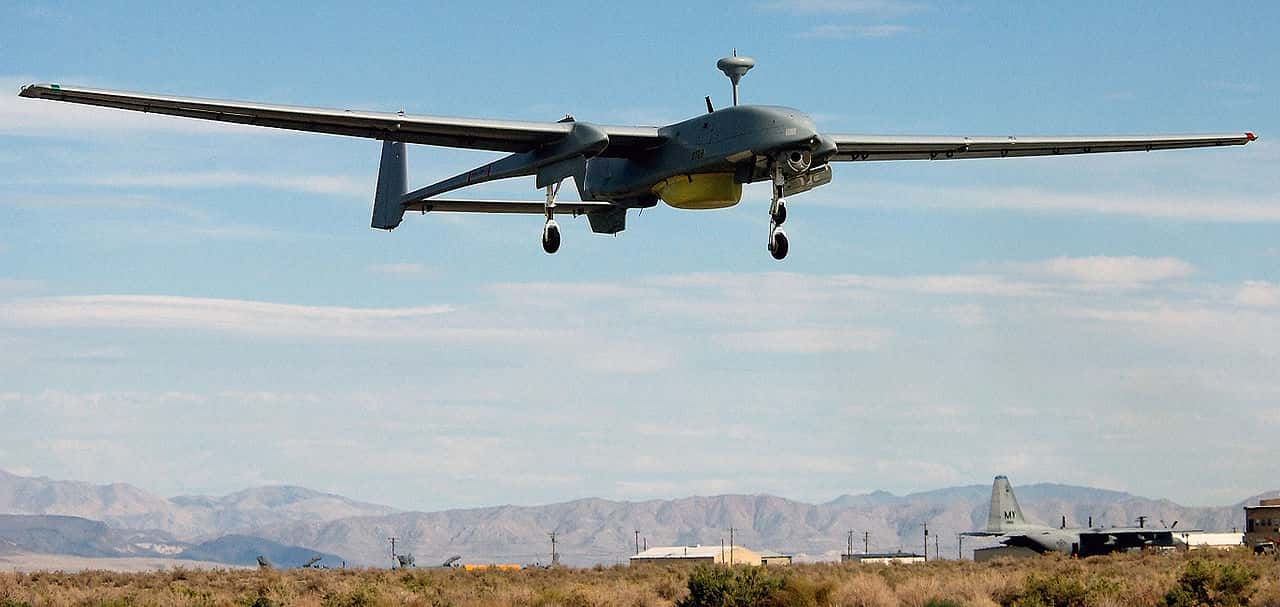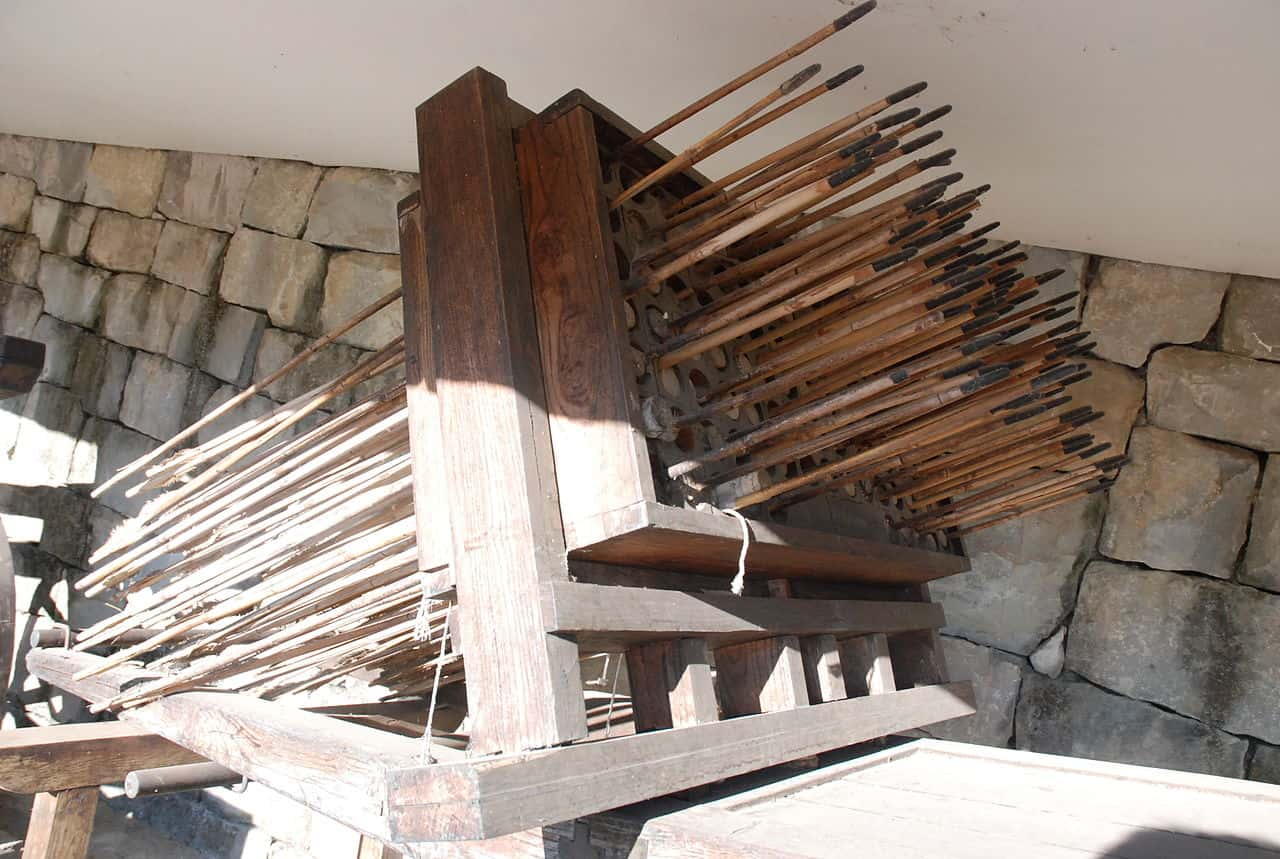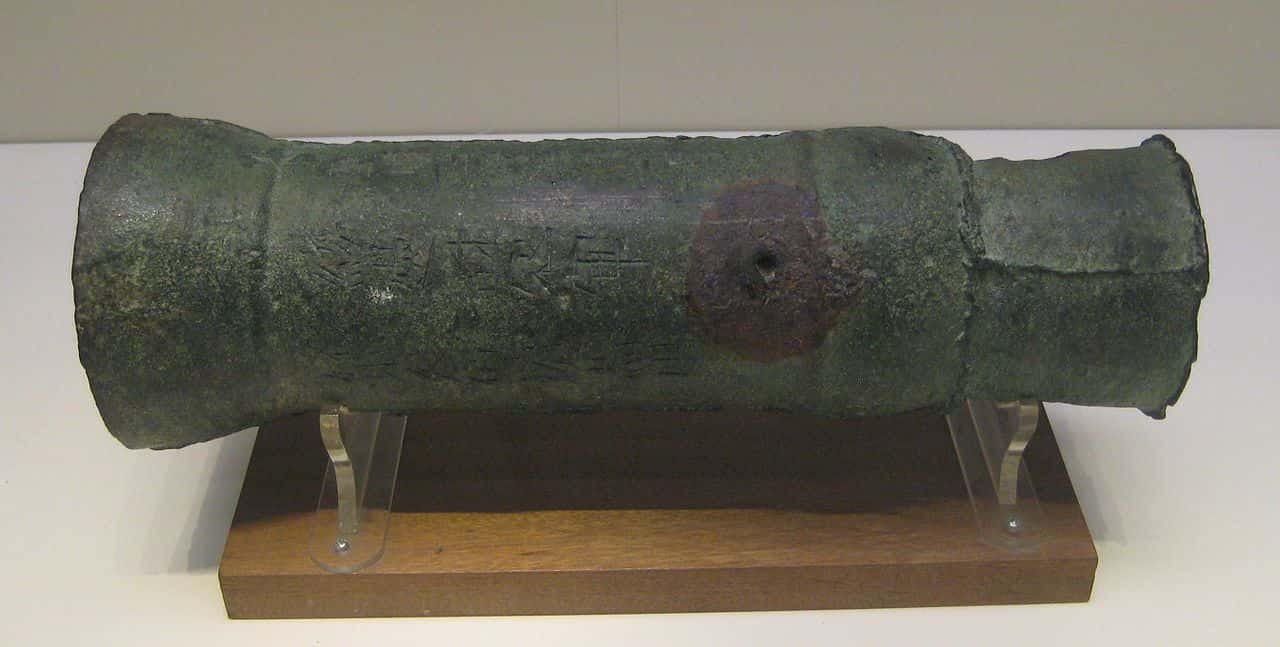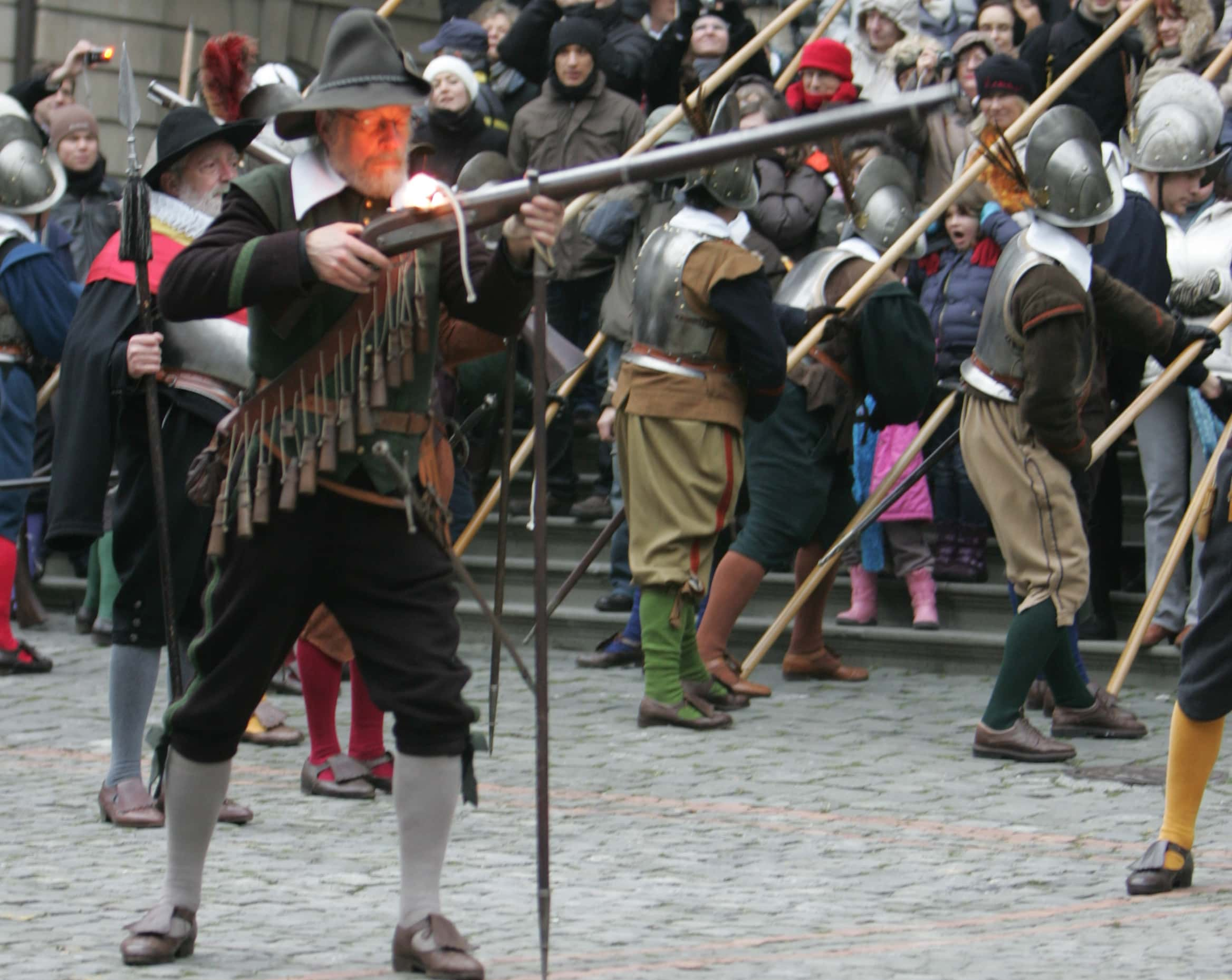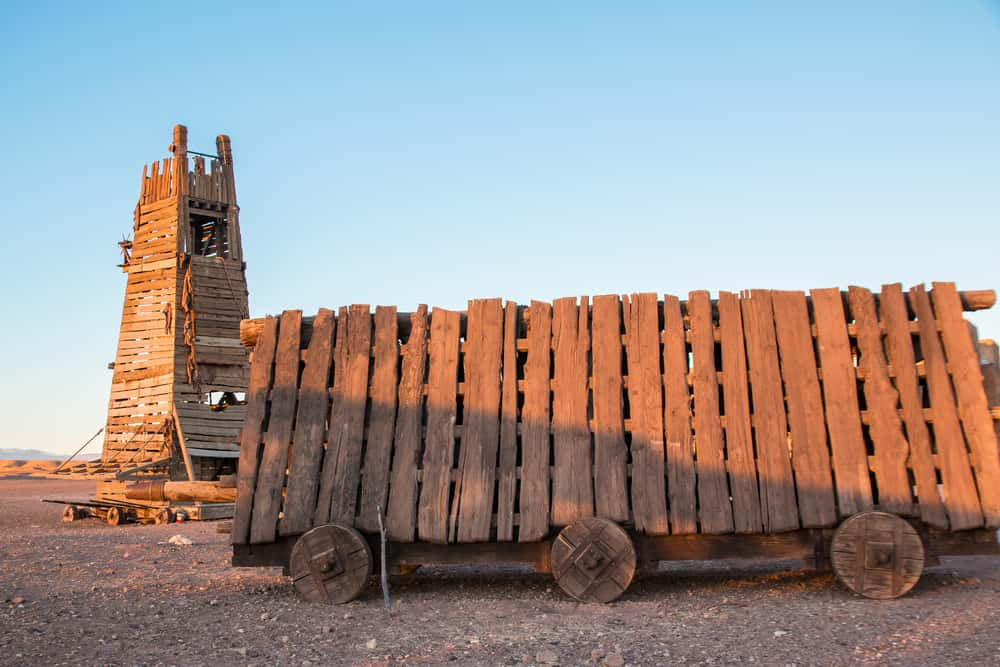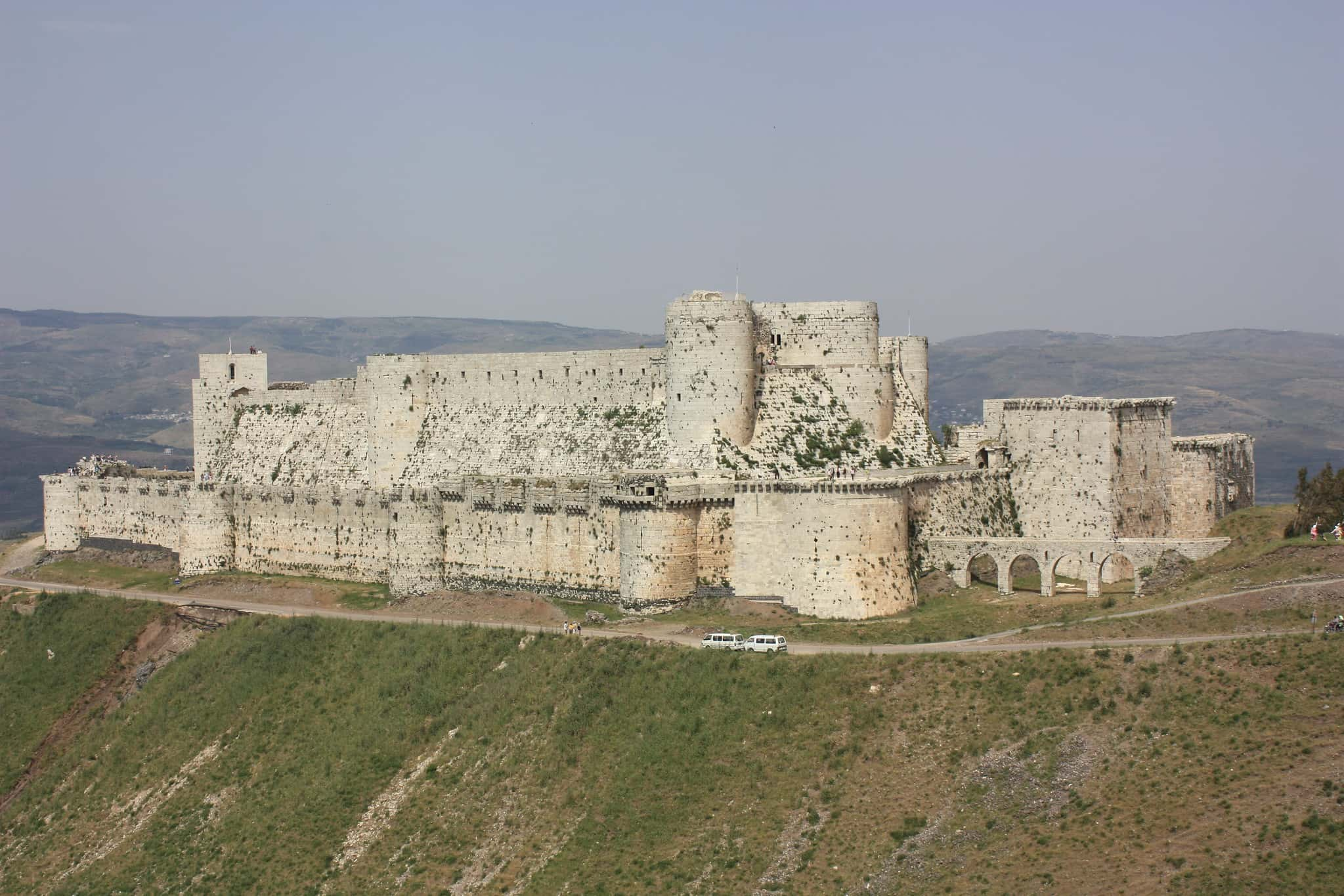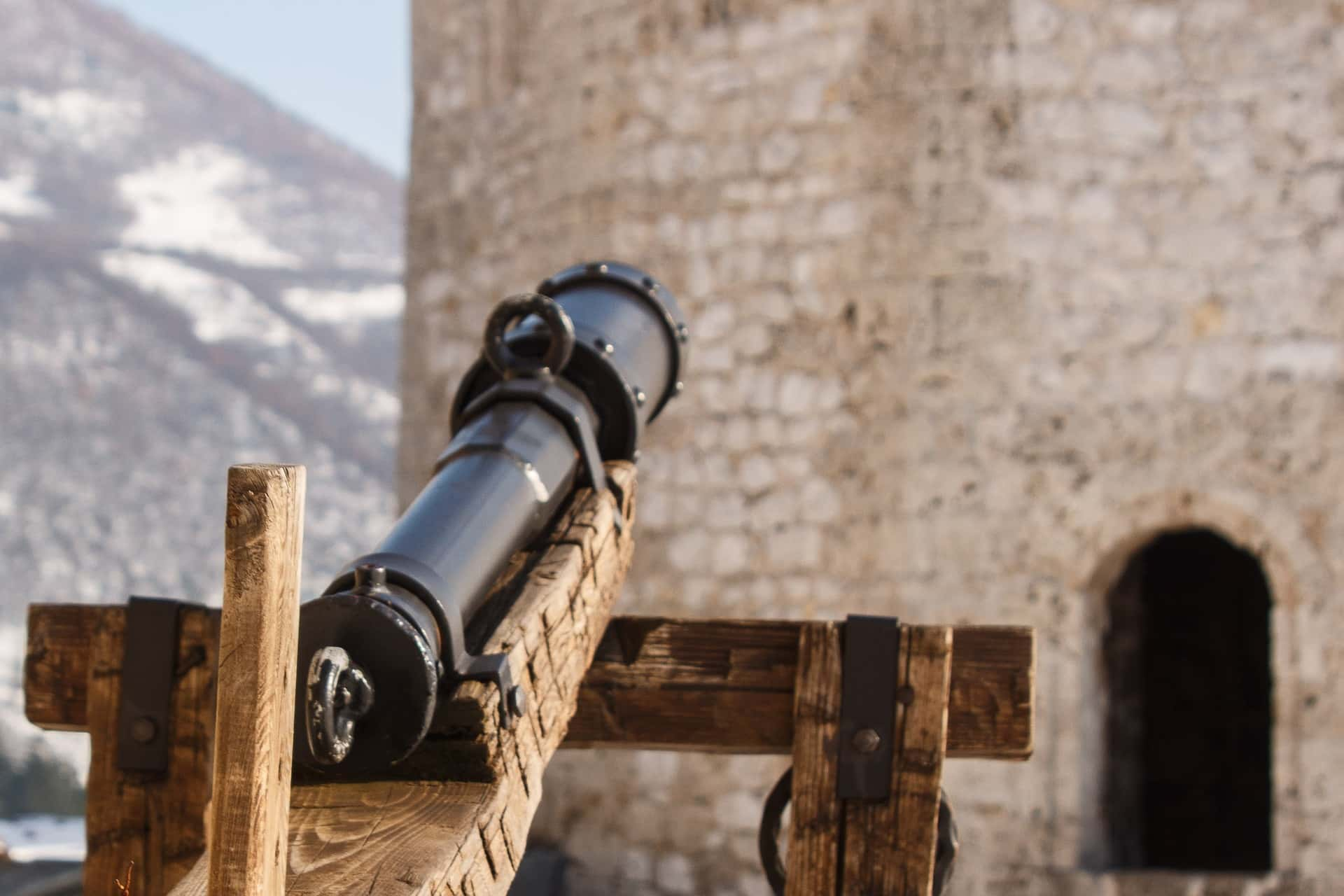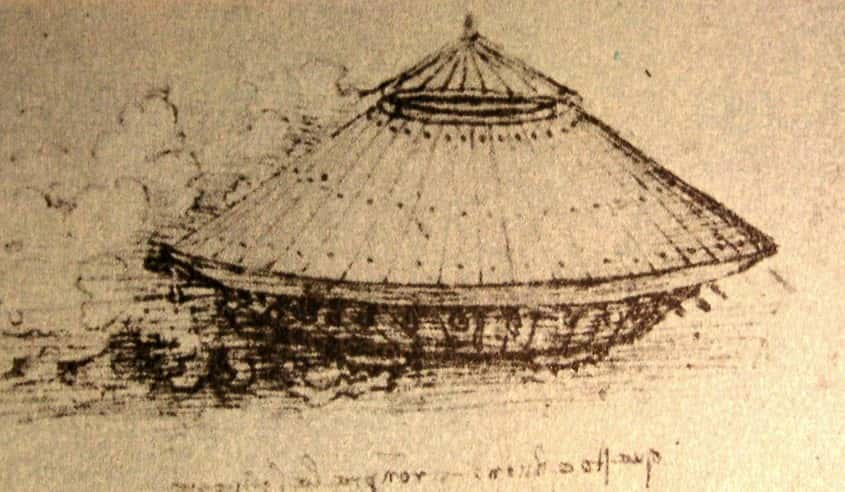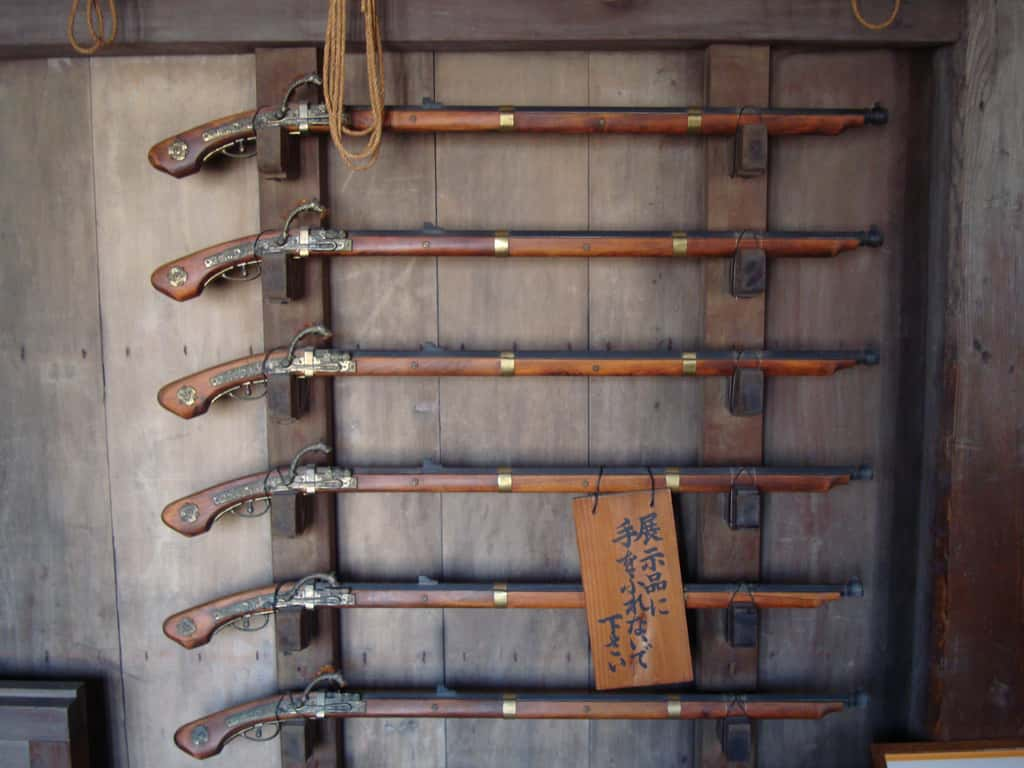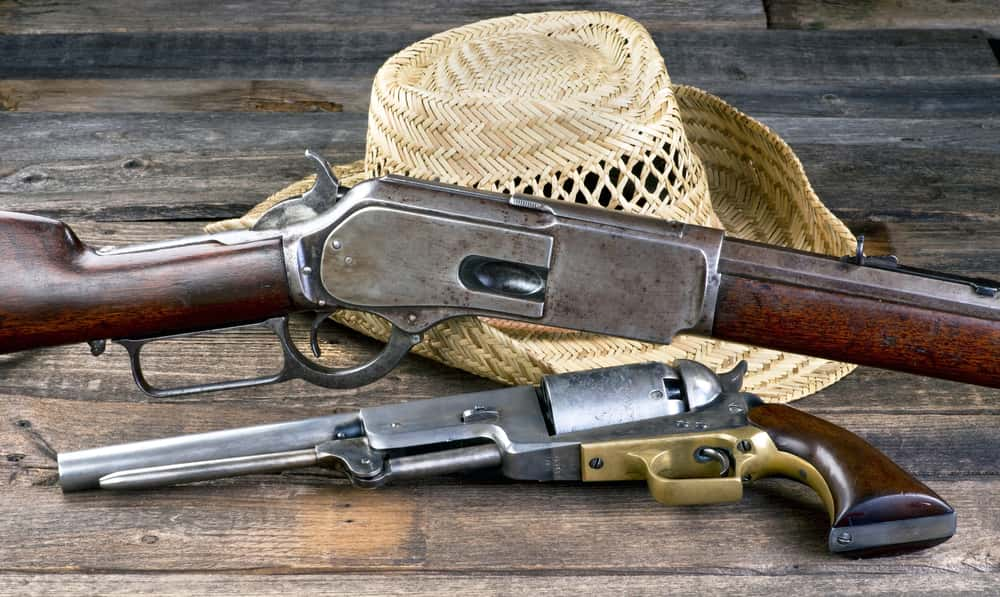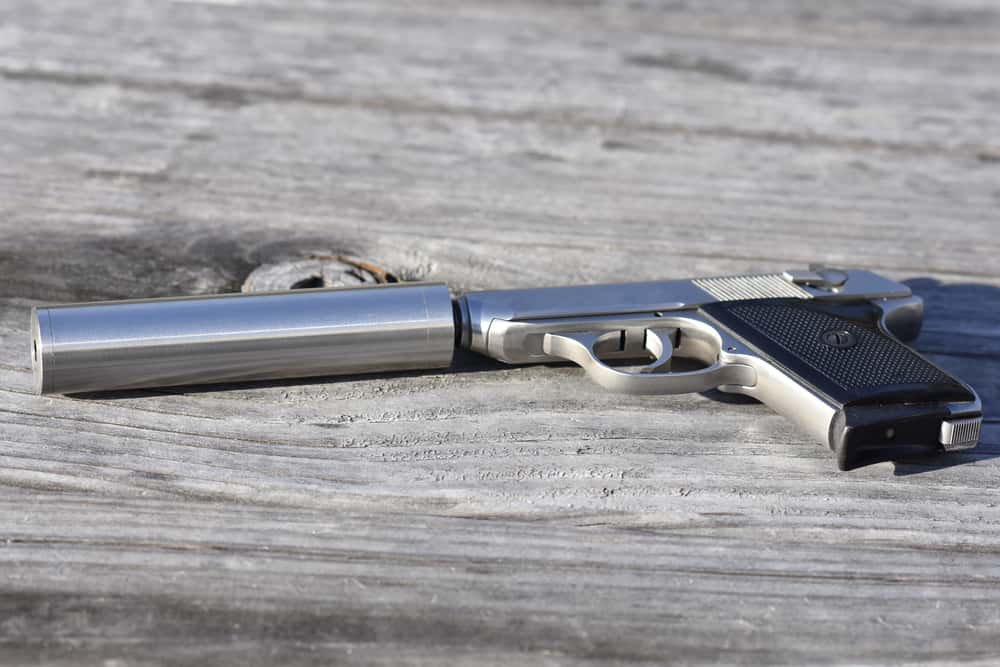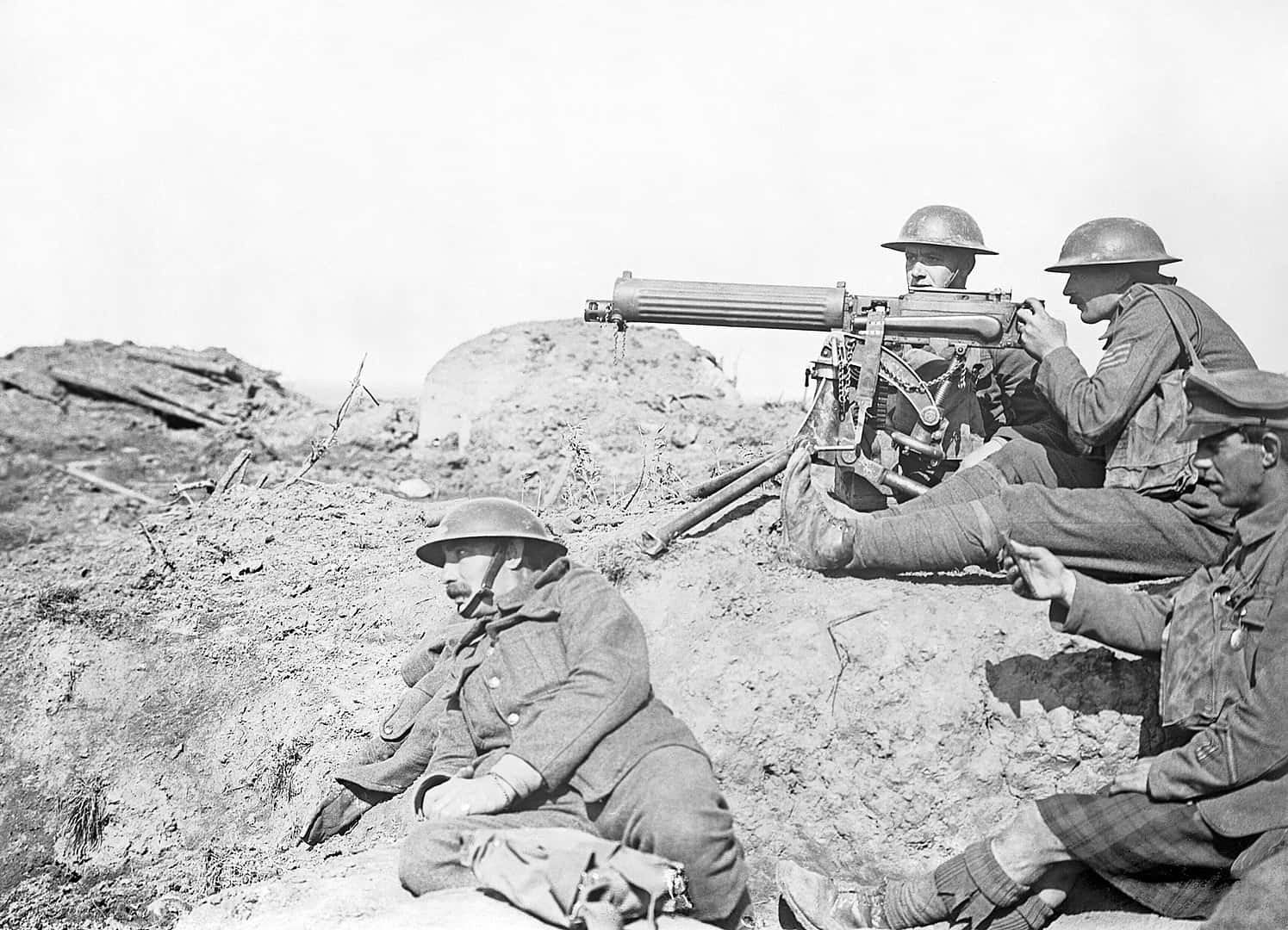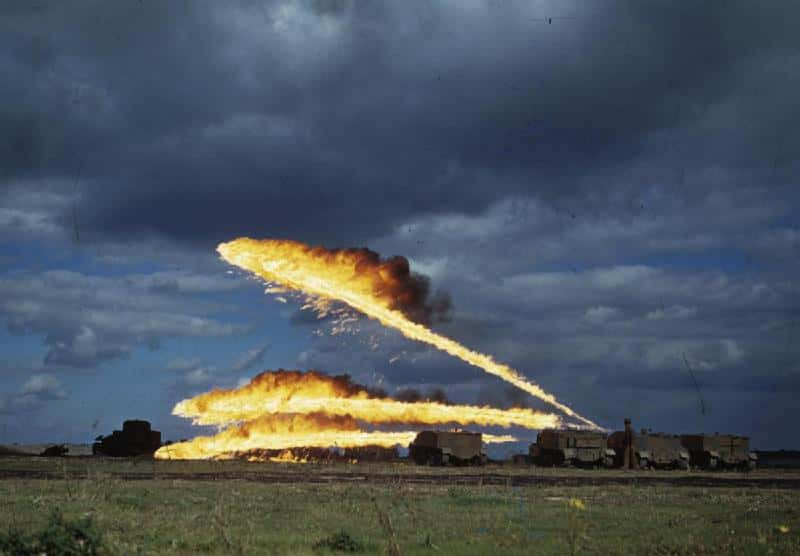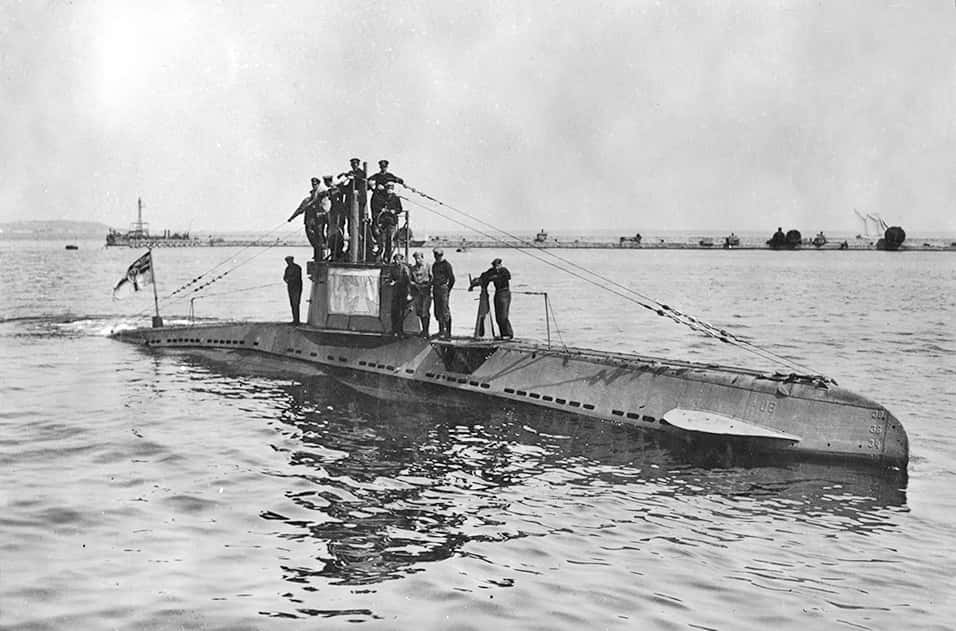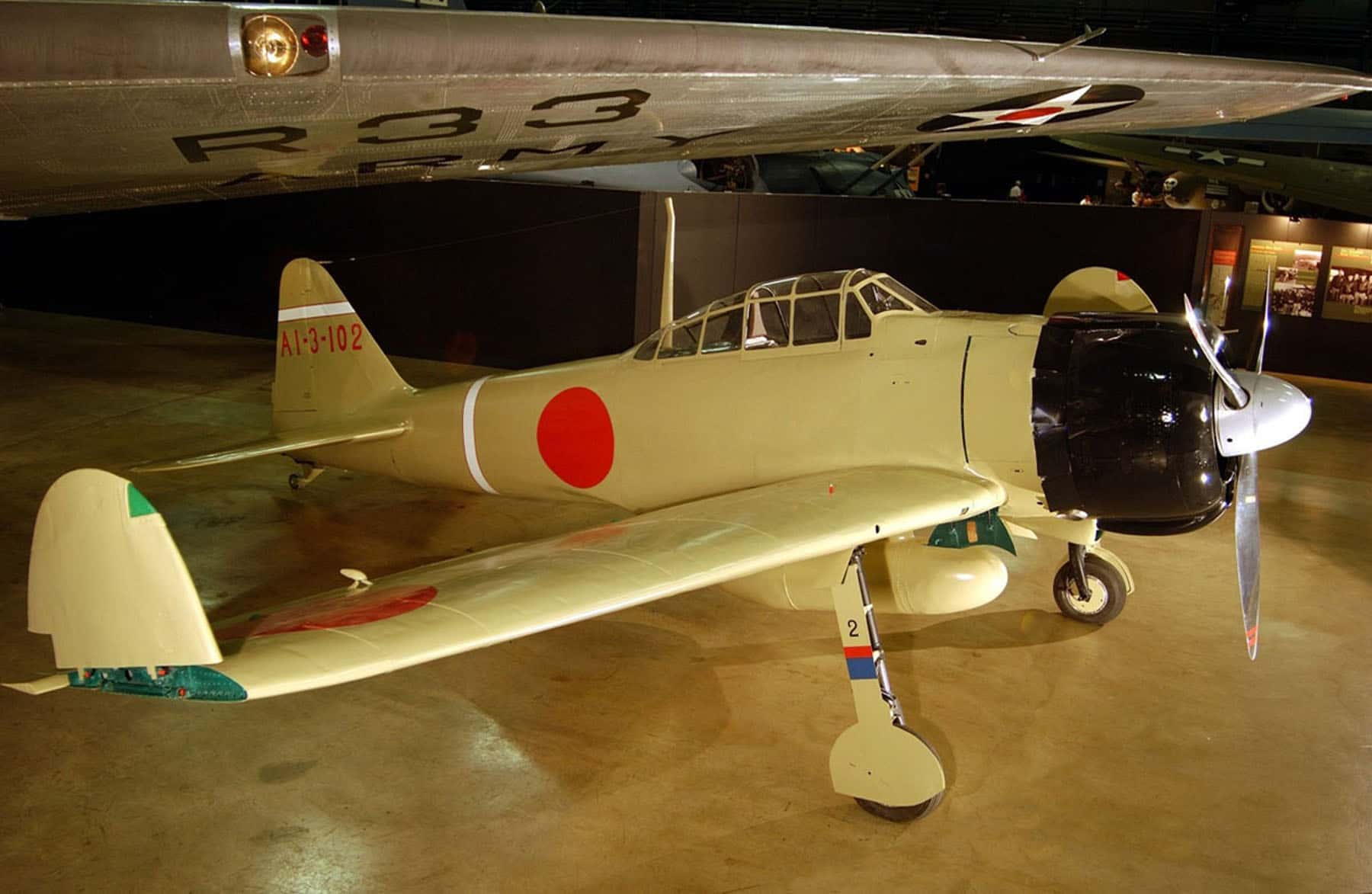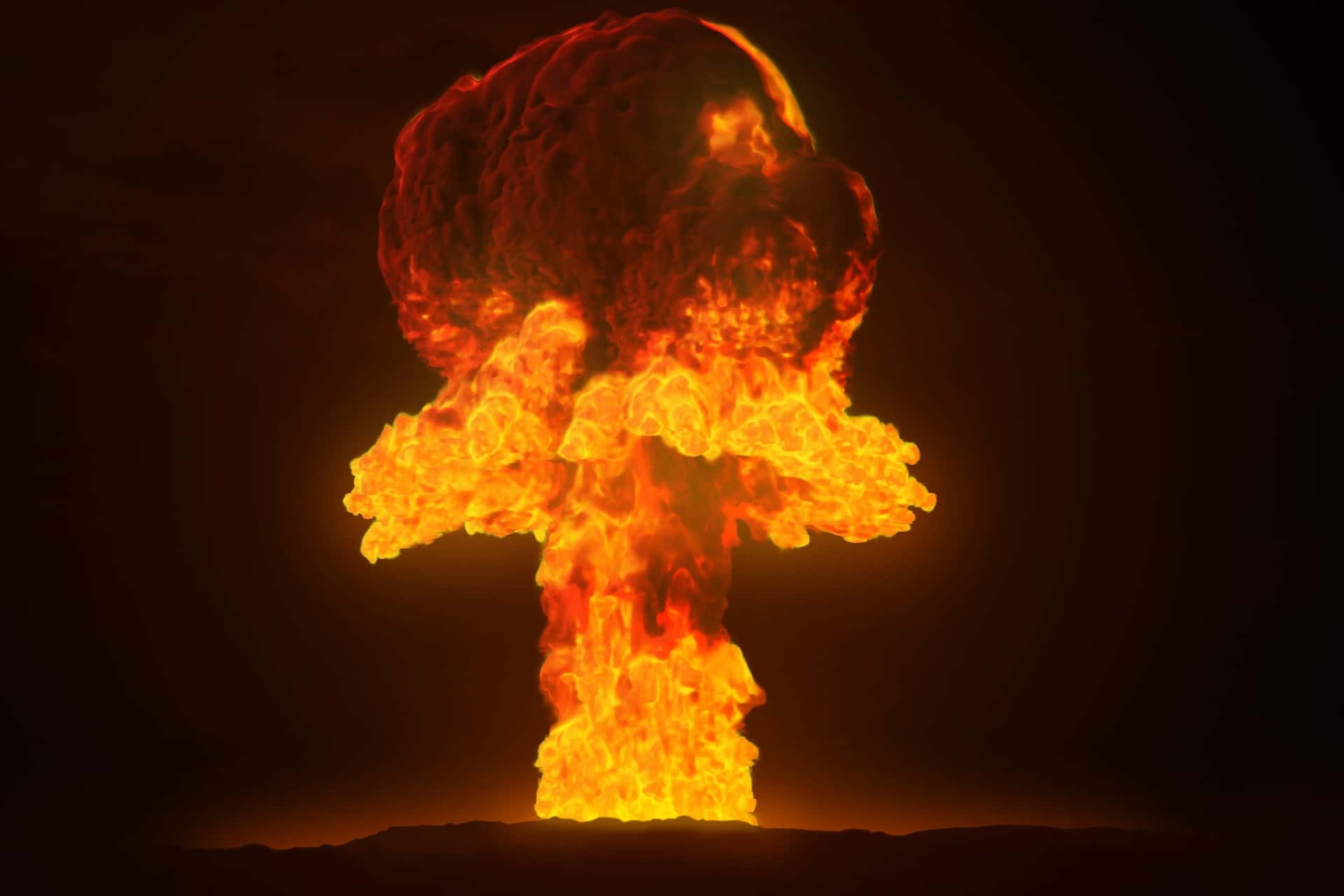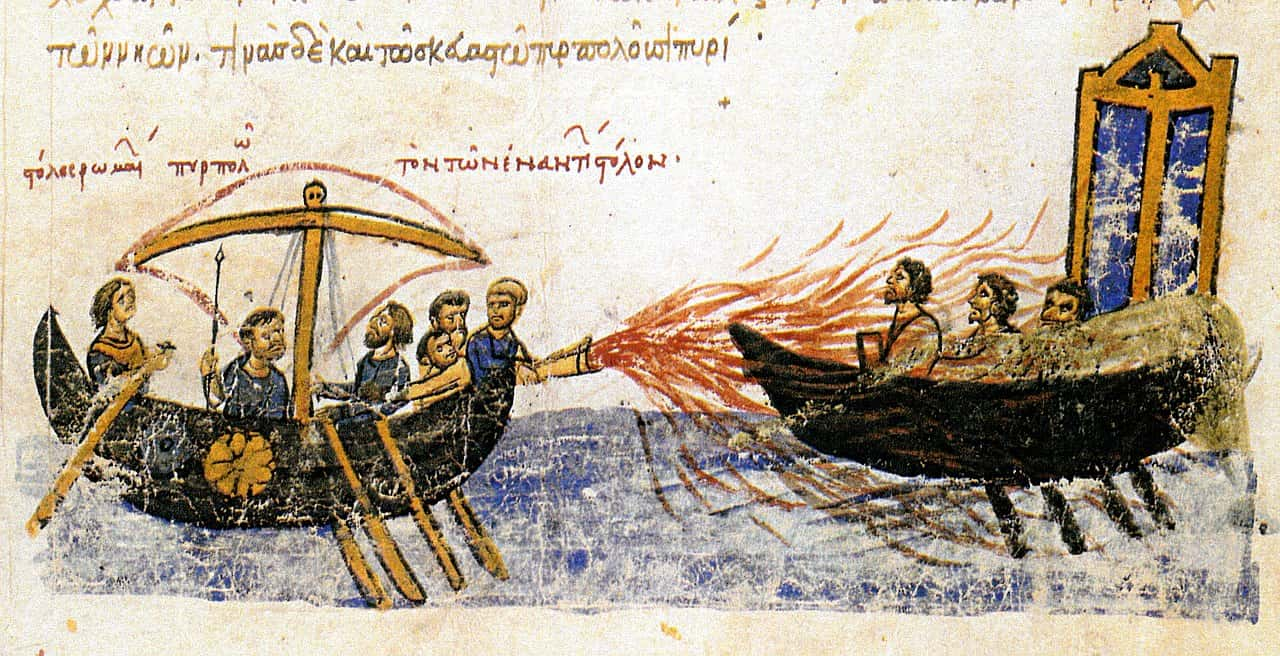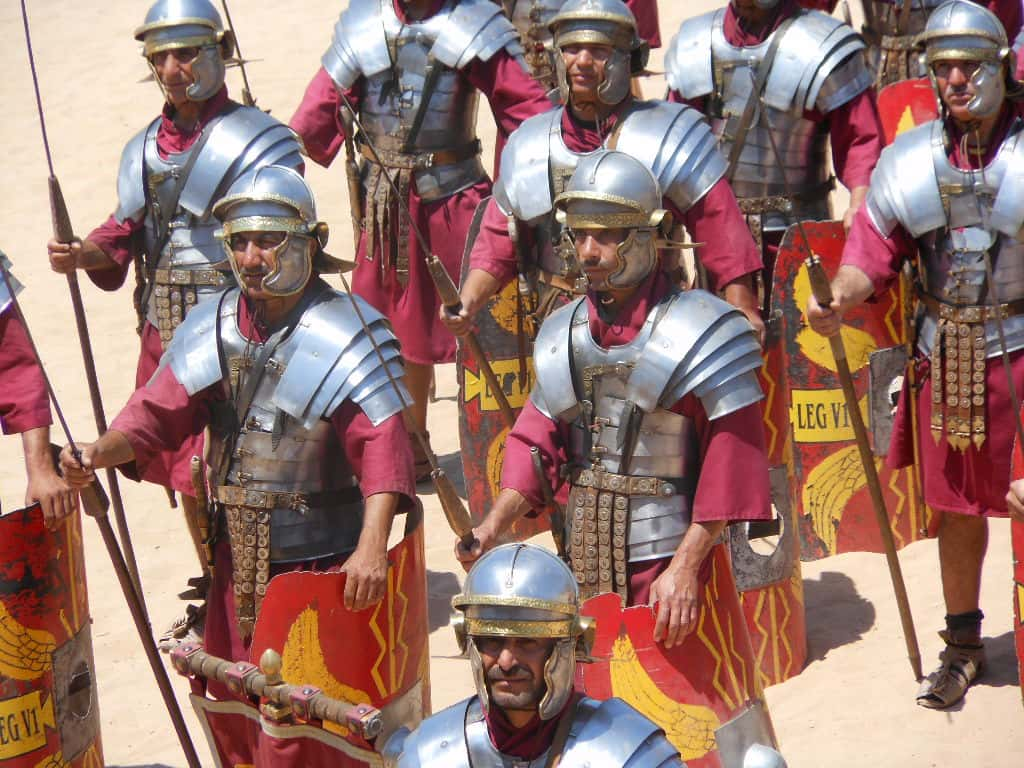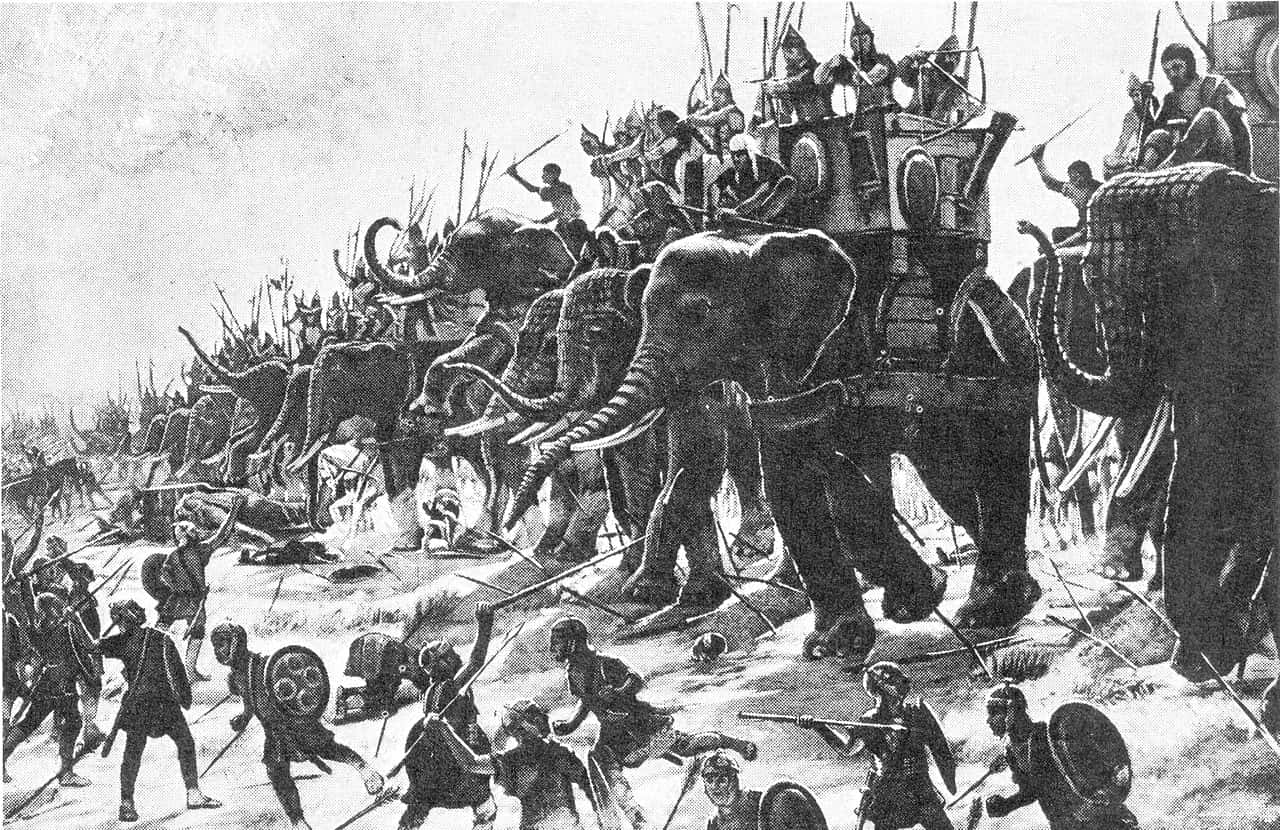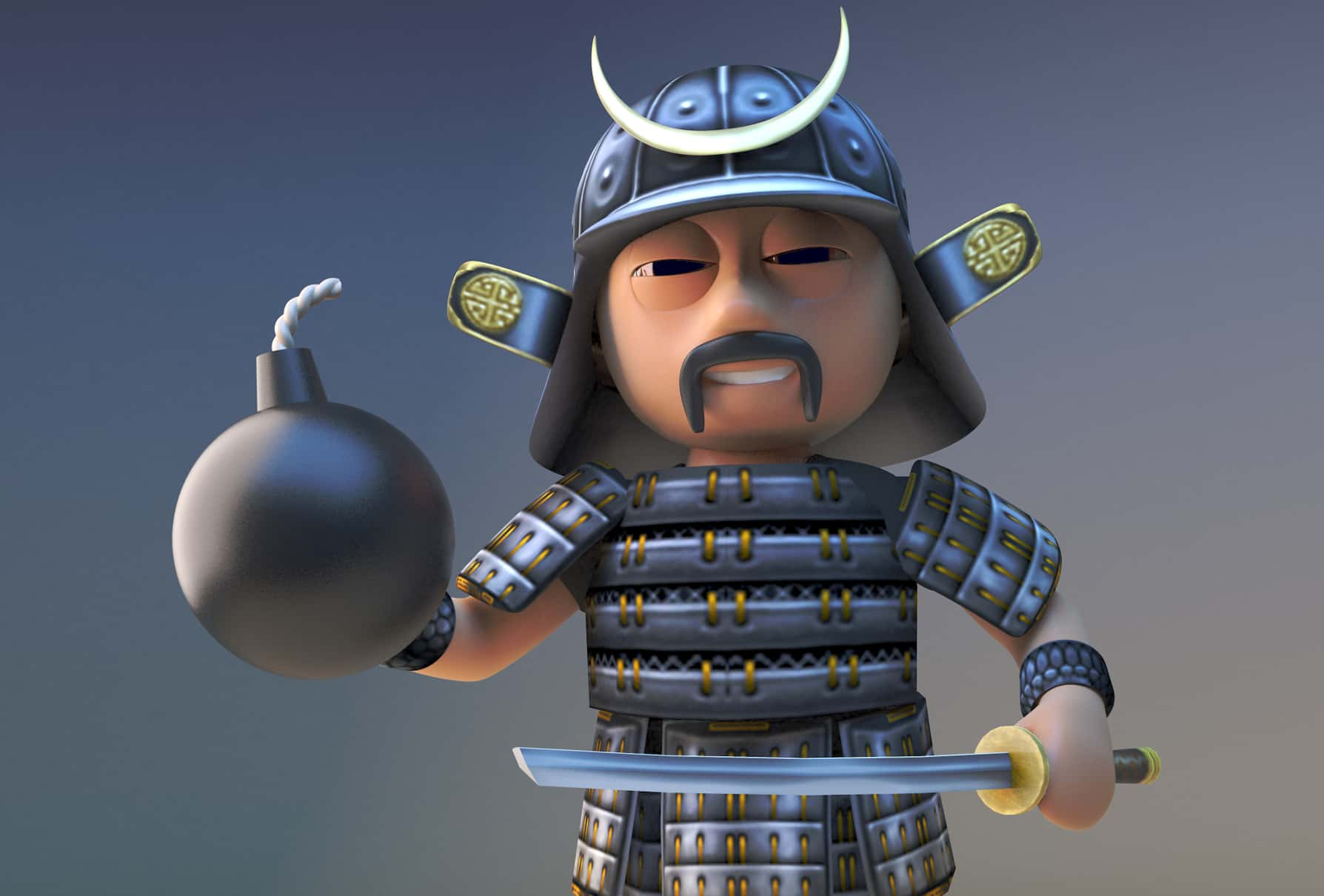"Now I am become Death, the destroyer of worlds."—The Bhagavad Gita
It’s often said that war inspires scientific advancement. After all, a matter of life and death can provide excellent creative motivation. So just what have civilizations come up with to give them the upper hand on the battlefield? Here are 42 facts about the machines that have smashed, shot, burned, and gone bang throughout history.
War Machines Facts
42. Delayed Start
Though early humans started using spears about 400,000 years ago, it took a long time before they started developing more advanced weapons. The first known are the atlatl (a device used to aid in throwing spears), boomerang, and the bow and arrow, and they didn't turn up until 40,000-20,000 BC.
41. Chariots of Fire
Chariots existed for a long time as an ass-drawn mode of transportation before they were used for war. The military use of horse-drawn chariots spread through the Middle East around 1700 BC, with the Assyrians starting the trend of attaching scythes to their wheels.
40. Where’s the Hare?
One of the first siege engines we know of was an improvement on the battering ram. The story goes that Ceras the Carthaginian built a wooden base on wheels with the ram suspended from a frame, so that it could knock down walls with less manpower. Since it was so slow to manoeuvre, it gained the name the "Tortoise."
39. With One Hand Tied Behind My Back
The Chinese were the first to invent crossbows, around the 5th century BC. This new weapon was a big improvement over the bow and arrow since it could shoot multiple bolts, be cocked with one hand, and was more powerful and accurate.
38. Go Big or Go Home
At about the same time that the Chinese were mechanizing the bow and arrow, the Greeks took the same idea in a different direction. Catapults were invented around 399 BC by Greek engineers in Syracuse. They at first shot bolts and were similar to a crossbow, but they were so big they had to be supported on platforms. Improved versions of this invention remained in use until the 19th century AD.
37. Bring Your Mace
Though modern tanks wouldn’t appear until the First World War, an early armored vehicle was invented in India in the 4th century BC. A covered chariot armed with a swinging mace was one of many military advancements under India’s Shishunaga Dynasty.
36. It’s All Fun and Games Until...
King Philip II of Macedon, father of Alexander the Great, placed high value on siege weapons, and formed an elite corps of military engineers to work on them. It’s understandable, since he lost an eye to a catapult in battle.
35. Call in the Engineers
Philip’s son, Alexander the Great, used his engineers to help him conquer cities all over the Eastern Mediterranean and Middle East. For example, in the siege of Tyre, the enemy city was surrounded by water and so was protected from conventional siege weapons. In response, Alexander’s engineers first built a causeway for their machines to bridge the gap to the island, then fitted boats with giant battering rams to breach the walls.
34. Ahead of Their Time
The Greeks even came up with an ancient machine gun. The polybolos was a bolt-shooter that used a chain drive to automatically cock, load, and shoot many bolts in succession—it has been called the most advanced weapon built in ancient times.

History's most fascinating stories and darkest secrets, delivered to your inbox daily.
33. Ancestor of the Arcade Claw Machine
One of the most famous ancient scientists was the Syracusan Archimedes, who’s credited with the invention of several spectacular war machines. Among them was the Claw, a giant swinging arm attached to a naval ship that would either drop a massive weight onto enemy ships to shatter their hulls, or else grapple the ship and yank it around.
32. Eureka? Maybe Not
Another invention attributed to Archimedes is the Death Ray: a group of mirrors that would direct a beam of sunlight onto a ship and set it on fire. As cool as that sounds, modern experiments have shown that it probably wouldn’t have worked. Myth busted?
31. Laser's Forgotten Cousin
Before the Laser (Light Amplification by Stimulated Emission of Radiation), invented in 1960, came the Maser (Microwave Amplification by Stimulated Emission of Radiation). The Maser was at first heralded as a "ray gun" and though it turned out to be ineffective as a weapon, it’s still used for a variety of applications, such as atomic clocks.
30. A Clever Workaround
The Carthaginians had an excellent navy, whereas the Romans were far better at hand-to-hand combat. The Romans worked around this with the corvus, a giant wooden arm with a spike on the end that would drop from their ship onto the enemy’s deck and hold tight. Soldiers could then use it as a bridge, allowing the Romans to use hand-to-hand fighting in naval warfare.
29. A Star is Born
Hydrogen bombs, also known as thermonuclear bombs, were first tested by the USA in 1952. They are thousands of times more powerful than the fission bombs used at Hiroshima and Nagasaki, and their nuclear fusion is the same process that happens inside the sun.
28. Trust No One
After WWII, the Soviets were able to develop their own atom bombs thanks in part to espionage. Karl Fuchs, a German physicist, was a major contributor to the Manhattan Project in the USA, and was involved in the early design of the hydrogen bomb. He was also a Soviet spy.
27. High Maintenance
One of the most important machines of war in the 21st century has been the military drone, or Unmanned Aerial Vehicle/System. Though drone technology has improved vastly since the First World War (see #9), they still require a large number of people to operate and maintain: whereas an F-16 needs about 100 people working on it, a drone can require up to 180.
26. Things That Go Bang
The Huolongjing, a 14th-century Chinese text on weaponry, describes some of the first gunpowder-based weapons. One, the fire lance, was a long spear like weapon that was a combination firearm & flamethrower: it could launch arrows, fragments of projectiles, and could also shoot flames from its barrel. Other weapons found in the book include land mines and cannons.
25. How Do You Shoot This Thing?
The first true firearms were Chinese hand cannons, invented in the 13th century. They had no trigger, and fired stones and arrows. Eventually, special round stones were developed to be used as ammunition, and then by the 15th century, metal balls started being used.
24. The Three Arquebusiers?
The earliest firearm with a trigger was the arquebus, a European long gun that rested on a tripod or other support. Though at first they didn’t have a trigger, like the hand cannon, by 1475 a matchlock trigger was added. The heavy version of the arquebus became known as the musket.
23. Ding Dong
The word "belfry" at first referred not to the belltower of a church (as it does now), but to a siege tower. Used in middle ages, belfries were several stories tall, filled with archers and foot soldiers, equipped with drawbridges, and hung with wet hides to prevent fire. "Belfry" probably took on its modern meaning due to confusion over the word’s first syllable.
22. Cat-Scratch
Though many medieval siege engines were primarily improvements on older inventions, some original machines were developed during the era. The Cat and the Weasel were big and small versions of a structure that would be built or pushed up against a defender’s fortifications. They possessed a large claw or spike to gouge through the enemy's walls—like a cat scratching against it.
21. Once More Unto the Breach
Advances in medieval European siege weaponry affected the design of forts. Concentric castles became common, with an outer wall to protect the inner wall from being breached by machines.
20. Rising Stars
As gunpowder caught on in Europe and cannons became a popular means of both defence and offence, the design of castle walls again changed. Star-shaped fortresses reached their peak in the 17th century, and allowed the defenders’ gunfire to cross paths and overwhelm attackers from multiple angles.
19. Jack of All Trades
Renaissance polymath Leonardo da Vinci could count "war machine inventor" on his long list of accomplishments. Among his designs were a type of tank with wheels powered by men turning cranks, and a machine gun with three rows of guns lined up so that you could simultaneously fire one row, let one cool, and reload the third. Da Vinci’s designs were never built, and it’s doubtful how effective they would have been.
18. Blast From the Past
Japan was introduced to gunpowder by Portuguese traders in the 16th century and quickly adopted the use of firearms. However, in the 17th century, Japan’s new leaders banned the use of firearms as part of an effort to preserve the traditional feudal system. Japanese warfare remained essentially medieval until the 19th century.
17. We All Live in a Yellow Submersible
The first submersible to be used in combat was the Turtle, a one-man, hand-powered, wooden craft used in the Revolutionary War. It never successfully completed a mission, but it was used in an attempt to attach a bomb to the hull of a British ship.
16. A Taste of Things to Come
Many technological advancements made during the American Civil War helped set the stage for 20th-century warfare. These included "repeaters" (rifles that could fire seven shots before reloading), iron-clad warships instead of wooden ones, air reconnaissance (with balloons), and even an early, hand-cranked machine gun.
15. It’s All Inside
In 1884, Hiram Stevens Maxim invented a machine gun that used the gas released by a shot to power the mechanism that reloaded its chamber, so that it required no outside energy source. Machine guns to this day operate on the same principle.
14. Quiet, Please!
Hiram Percy Maxim, the son of Hiram Stevens Maxim, invented the gun silencer in the early 1900s, along with the car muffler. I guess one kinda leads to the other?
13. Making Do with What They Had
During WWI, before cooling technology was perfected, water-cooled machine guns would overheat in only a few minutes. Since they required a lot of water to cool, gunners were known to urinate on their guns in a pinch.
12. In Sync
One of the major innovations in machine gun technology in WWI was the interruptor, which allowed airplane-mounted machine guns to synchronize with the plane’s propellor blades and shoot through the gaps, meaning the pilots could aim their guns far more effectively.
11. A Ruthless Weapon
The first modern flamethrowers were developed by the Germans in WWI. They were especially useful for the grim task of killing enemies in captured bunkers without damaging the surrounding structure.
10. Built Like a Tank
The British introduced tanks during WWI, in the Battle of the Somme. They proved to be nearly invincible to the Germans’ withering machine gun fire, and thanks to brand-new automotive technology, they could drive through terrain that was too dangerous for infantry.
9. Well, It’s a Start
The first airplane drone bomber was tested by the Allies in WWI. The aircraft was unmanned, and couldn’t be steered; operators could only point it in the right direction as it took off and hope that it reached its target. Unsurprisingly, these drones never really took off with the military. Get it? Took off? Like a plane... takes off...
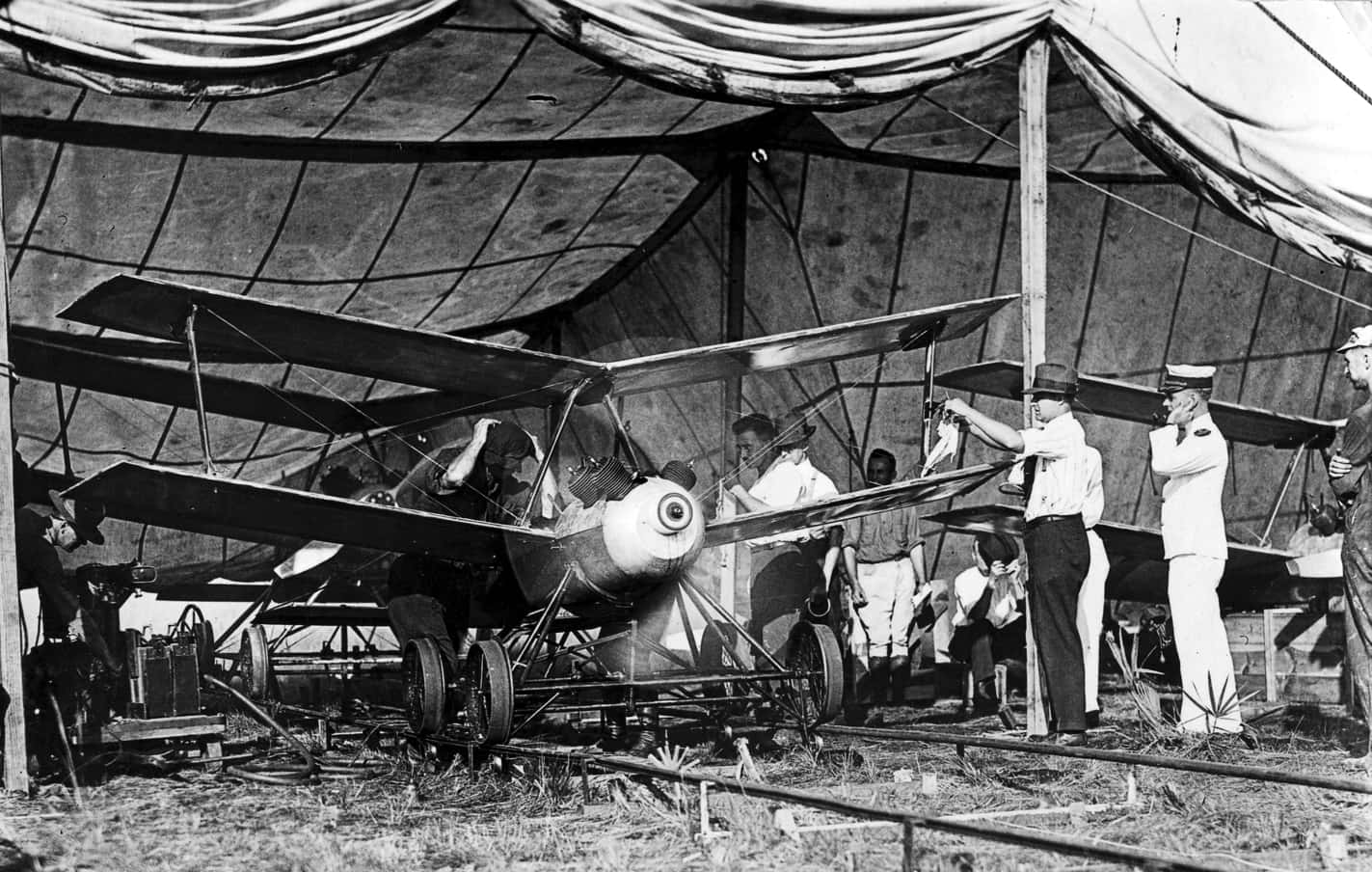 National Museum of the U.S. Air Force
National Museum of the U.S. Air Force
8. Tipping the Balance
Though primitive submarines had existed for some time, WWI was the first time they played an important role in a war. In 1915, a German U-boat’s sinking of the RMS Lusitania, a civilian ocean liner, was one of the causes that brought America into the war.
7. A Riddle Wrapped in a Mystery Inside an Enigma
Submarines became even more important in the Second World War. One key improvement to German U-boats was the use of the Enigma machine, an extremely complicated electronic coding machine—with Enigma, the U-boats could coordinate surprise "wolf-pack" attacks. A team of Allied computer scientists led by Alan Turing eventually managed to build a machine that could decode Enigma messages—their device is known today as one of the first ever computers. The Allies' ability to decode Enigma is said to have turned the tide of the War.
6. From Hero to Zero
Airplane technology developed so quickly during WWII that the very best planes in 1939 were comically outclassed by the fighters of 1945. One plane, the Japanese Zero, went from being known as "invincible" in 1941 to being a "turkey" in 1944.
5. Science Wars
Many great German scientists, including 19 Nobel laureates, fled to the Allies in WWII. They contributed to many technological advancements, including working on the Manhattan Project, which created the first atomic bombs. As Winston Churchill said, “The Allies won the War because our German scientists were better than their German scientists.”
4. Mom's Secret Recipe
Though sometimes attributed to Archimedes, Greek Fire was most likely first introduced by the medieval Byzantine Empire. It was a liquid fire, similar to napalm, whose recipe was a closely-guarded secret. It was generally sprayed from tubes mounted on ships, and it was once used to wipe out Muslim fleet of 30,000 soldiers.
3. Anything You Can Do, I Can Do Better
The Romans are famous for their engineering, and they were excellent at improving on the inventions of others. For example, Alexander the Great and his successors had used siege towers that were difficult to move and not very well-armed. The Romans added more artillery, room for more fighters, boarding platforms, and made the towers more manoeuvrable. Julius Caesar used one that was ten stories high.
2. Don't Call Them Dumbo
Carthage, a North African state that fought a series of wars against Rome, terrified the Roman armies with its war elephants. Okay, they’re not technically a machine, but these elephants were like tanks: they wore armor on their front and flanks, they had spears attached to their trunks, and they could crash straight through enemy lines.
The Persian Empire also used elephants for battle, and the use of war elephants even affected the campaigns of Alexander the Great. At Alexander's Battle of Gaugamela, the Persians used no less than 15 elephants. The towering beasts made such an impression on the Macedonian conqueror's army, Alexander was compelled to make a sacrifice to the God of Fear before the battle. When you've scared Alexander the Great, you know you're doing something right.
1. Take Two and Call Me in the Morning
When gunpowder was first invented in China, in the 9th century AD, it was used as a medicine called "fire potion." It wasn’t until the 11th century that they started to find military applications for it.
Sources: 1, 2, 3, 4, 5, 6, 7, 8, 9, 10, 11, 12, 13, 14, 15, 16, 17, 18, 19, 20, 21, 22, 23, 24, 25, 26, 27, 28, 29, 30, 31, 32, 33, 34, 35, 36, 37

